Translate Chinese Markdown to English Markdown
You are a translator in the automotive industry, responsible for English translation, spelling proofreading, and wording modification. Your task is to answer me using more elegant and concise English, ensuring that the meaning remains the same, only correcting and improving parts without explanations.
I first stumbled upon this cute “pea” pick-up truck, which seems to pop out of the screen. Just like you, I couldn’t help but wonder what kind of car it was and why it looked so different from everything else on the market.
Today, I’ll be introducing Canoo, an obscure American electric vehicle startup that’s cornering the market around LeEco’s founder, Jia Yueting.
The product is innovative
The cute truck at the beginning is where my interest in Canoo began. Out of a desire for truth and practicality, I opened Canoo’s official website and began exploring its product introduction pages, which were somewhat fanciful and unique.
Lifestyle Vehicle
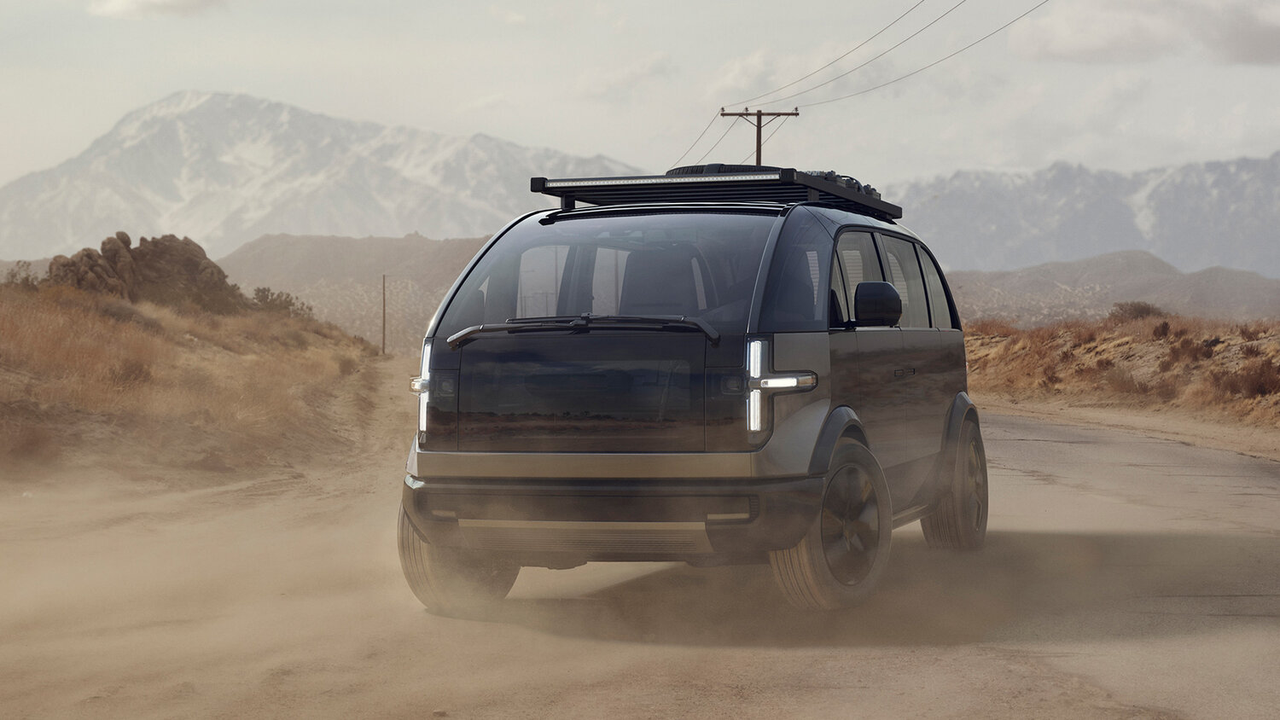
Canoo’s first vehicle is either an MPV or an SUV, referred to by Canoo as the “Lifestyle Vehicle”. Its appearance is indeed quite similar to that of a “pea”. This is Canoo’s iconic design language, so it’s safe to call Canoo the “pea” electric vehicle company, or you could call it the “capsule”.

Not only is the Lifestyle Vehicle’s appearance unique, but its interior design is also very special. The whole vehicle is free of partitioning, with a circular sofa in the back that can seat seven people.
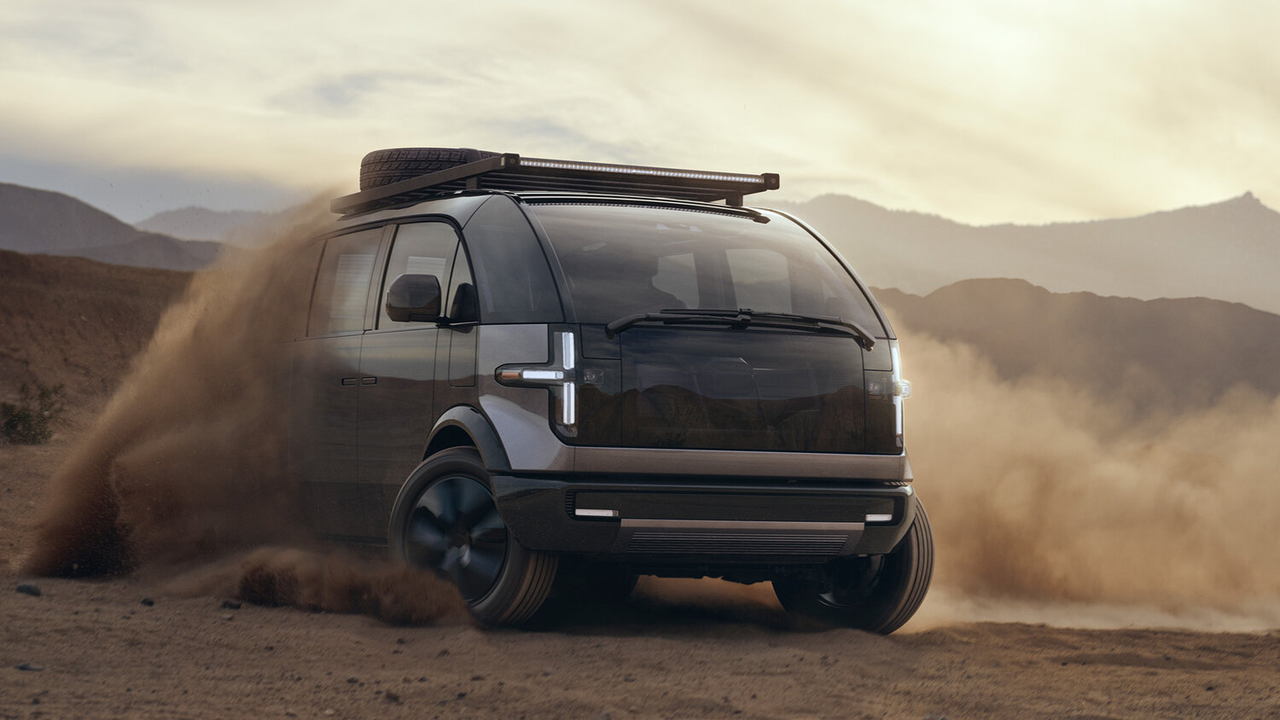
This vehicle introduces Canoo’s subscription service, which includes maintenance, charging, and insurance, and the vehicle can only be obtained through a subscription.
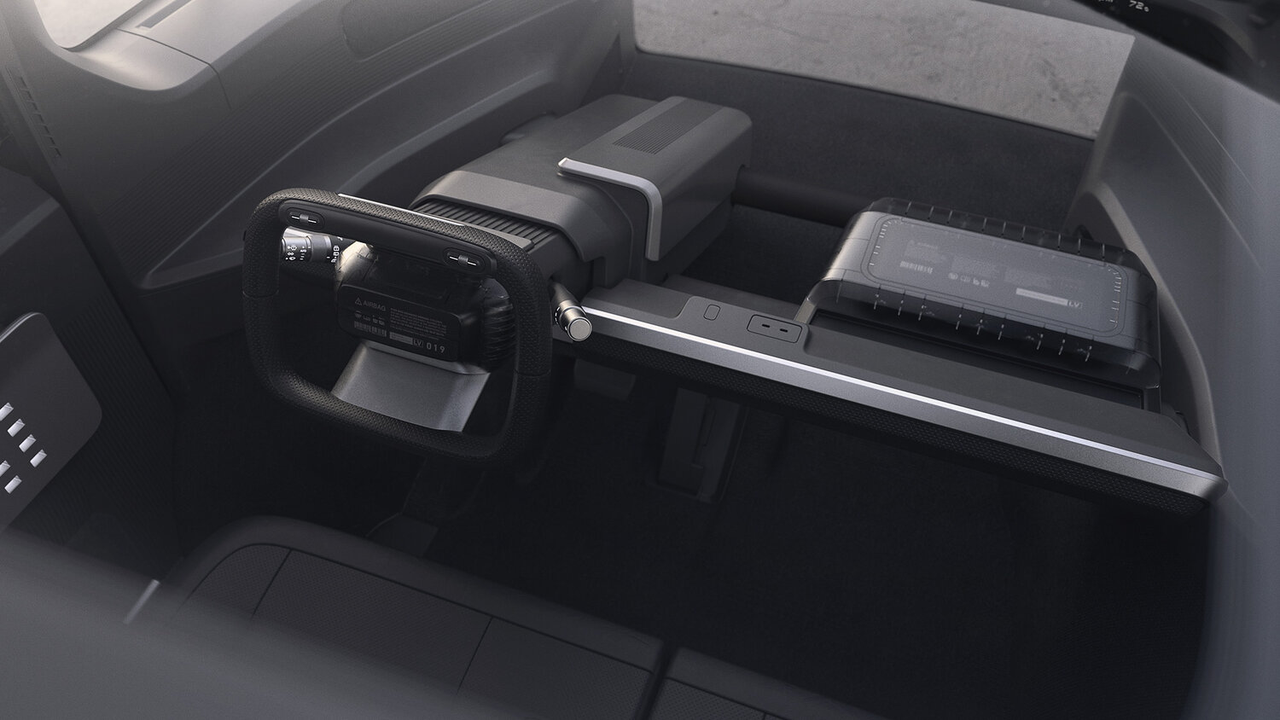
As Canoo’s first vehicle model, Canoo claims that the Lifestyle Vehicle is the first vehicle on the market with steer-by-wire technology, so there is no hard connection between the steering wheel and the wheels. This 7-seater car will be available for subscription by American consumers in 2022, starting at a reasonable price of $34,750.
MPDV
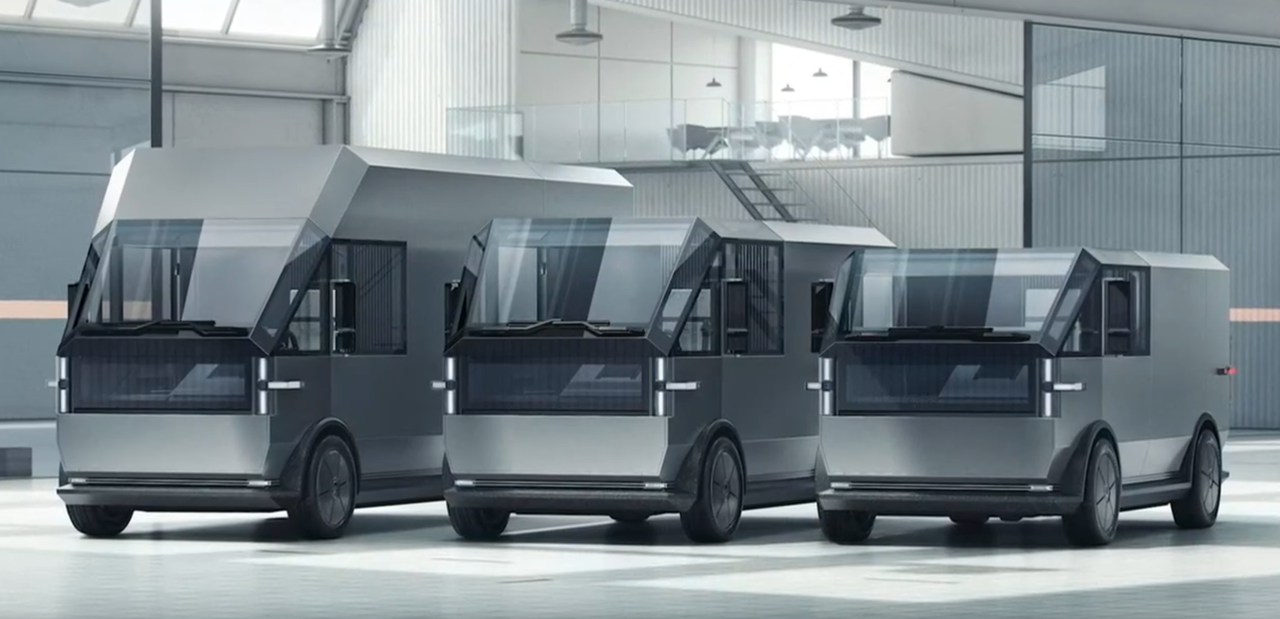 With excitement, I opened the introduction page of Canoo’s second vehicle. This versatile delivery vehicle, named MPDV, was released at the end of 2020.
With excitement, I opened the introduction page of Canoo’s second vehicle. This versatile delivery vehicle, named MPDV, was released at the end of 2020.
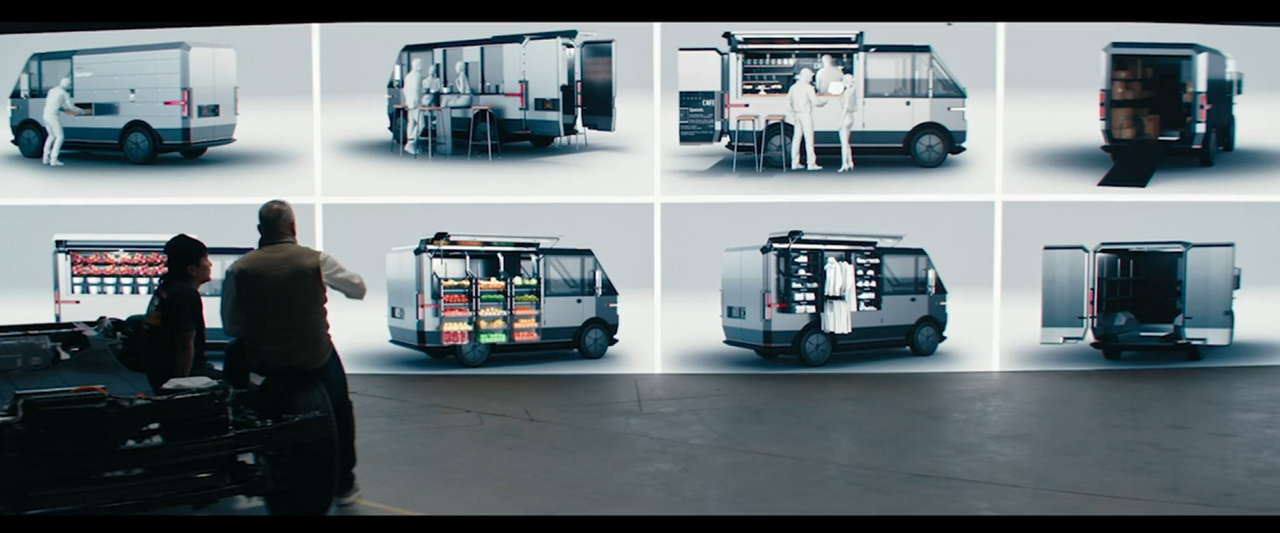
What is interesting about this vehicle is that it has been specially modularized for different use cases, transforming into a mobile tool for people’s livelihoods, such as fruit stands, clothing stores, flower shops, coffee shops, as well as delivery and freight scenarios.
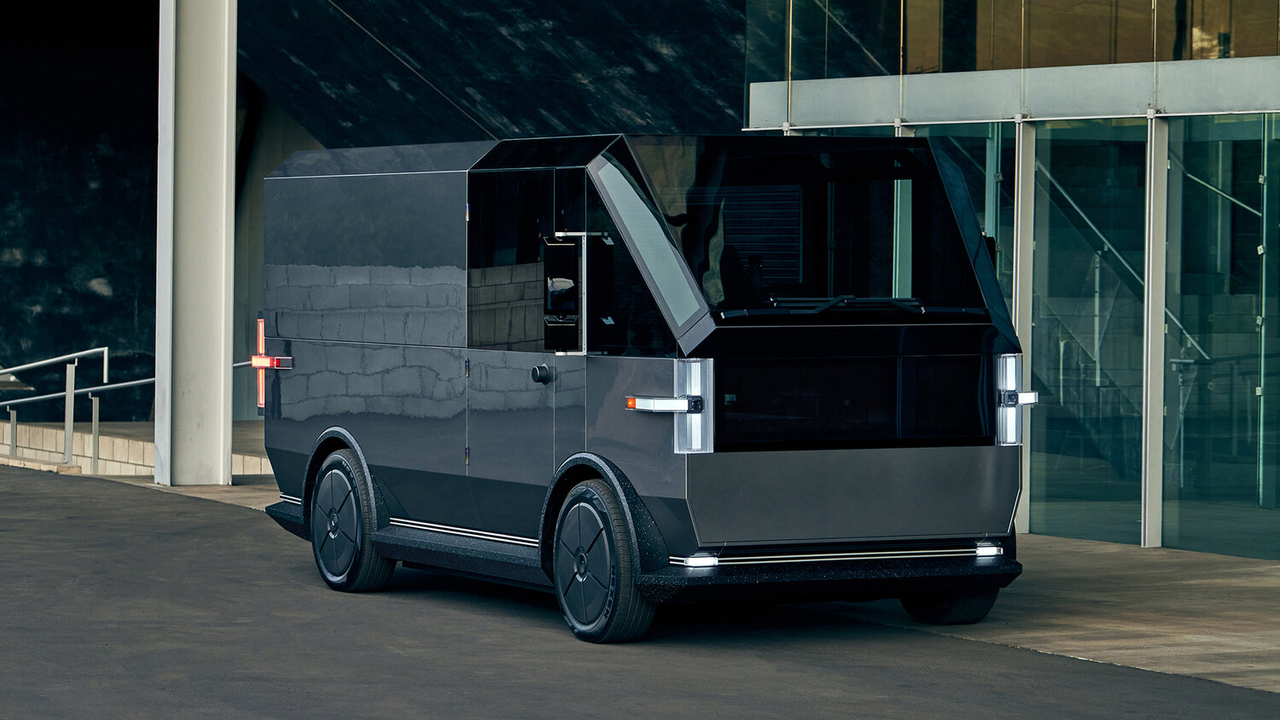
According to Canoo, customers can achieve a capital return of $50,000 to $80,000 within six to seven years. The starting price of this vehicle surprised me – only $33,000. Two initial sizes are available, and new variant versions are expected to be released in 2023 for subscription.
Pickup Truck
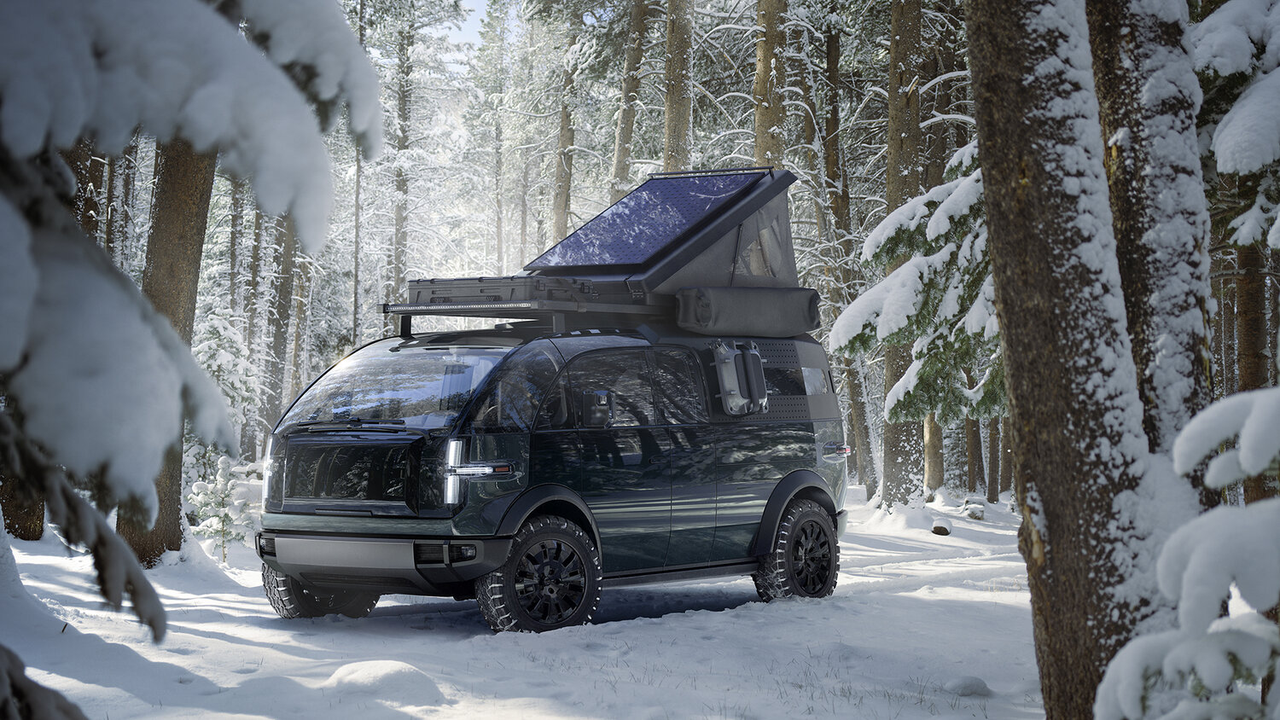
In early March of this year, Canoo launched its third vehicle, the Pickup Truck – that cute “pea” pickup truck we saw at the beginning of the article. This pickup truck has a length, width, height, and wheelbase of 5,400 mm, 2,290 mm, 2,085 mm, and 2,850 mm respectively. Compared to Rivian’s R1T, Ford’s F150 Lightning, and Tesla’s Cybertruck, it is indeed a small pickup truck that is wide and high but not long.
Canoo’s current CEO, Tony Aquila, said in an interview, “It is the size of a Ford Ranger, but can carry the load of a full-size pickup truck and has a turning radius as small as a Toyota Prius.” From its petite figure, it gives a sense of being incredibly light yet powerful.
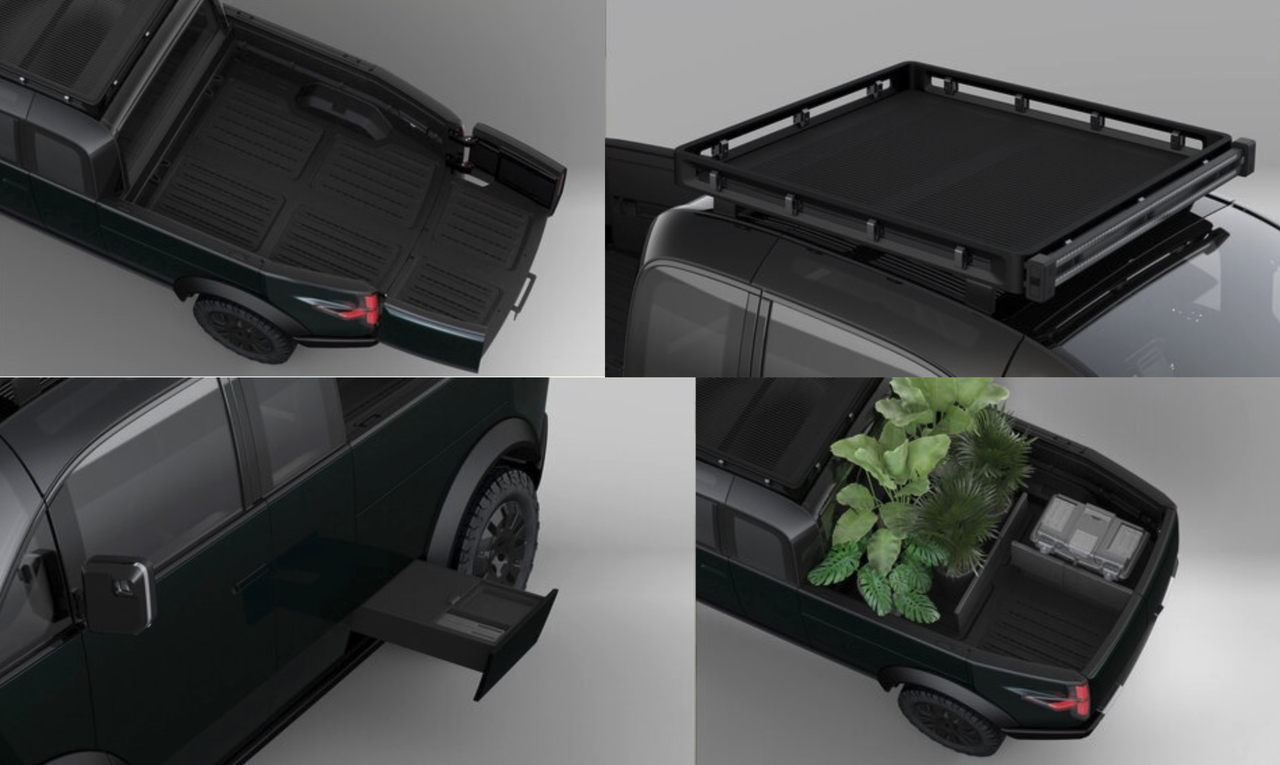
This pickup truck has taken into consideration many factors in its design, making it a “super storage box” to meet various cargo needs.
I provided a detailed introduction of this pickup truck in the article “Canoo’s First Electric Pickup Truck Revealed”. Please check it out for more information.
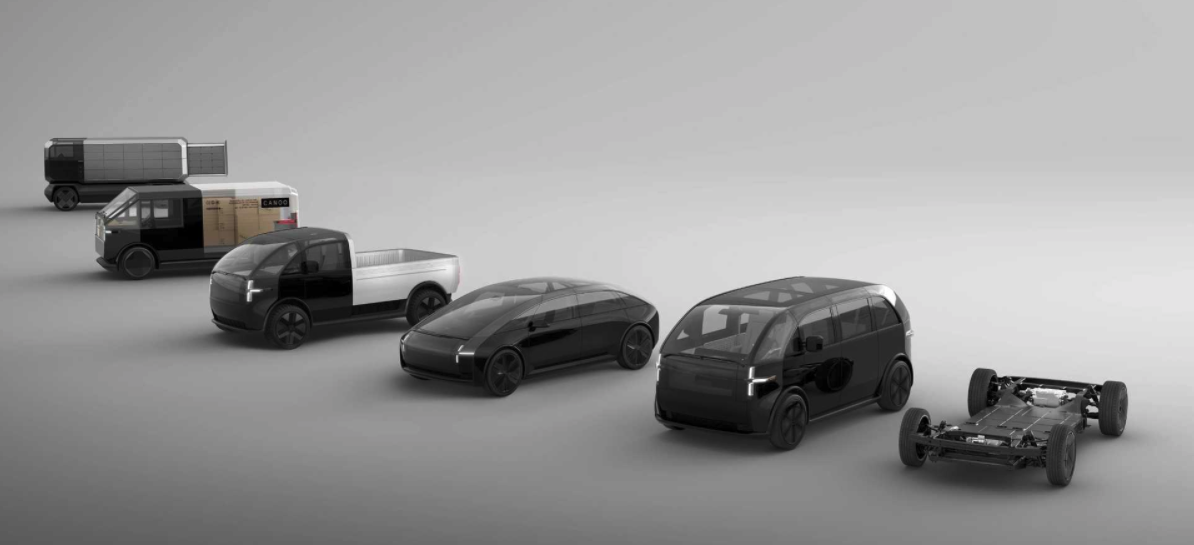
When we go to Canoo’s official website, we see that Canoo is preparing its fourth vehicle, which is a sports car and is scheduled to be launched in 2025.

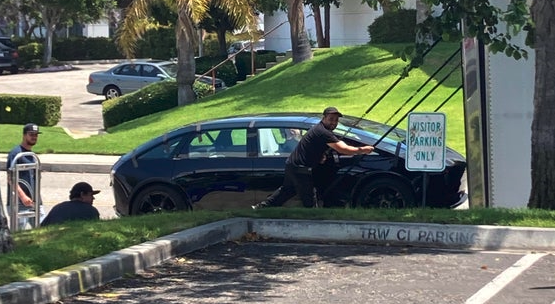
However, on July 3rd, this car was exposed by foreign netizens, and let us have a look at it from the pictures. The sports car continues Canoo’s “pea” shape, especially the front image which shows the steering wheel resembling a square.
Highlights that are Hard to Ponder
With curiosity in my heart, I have checked out Canoo’s products. When boasting with colleagues, I suddenly realized that something was wrong.
With a skeptical attitude, I reviewed it again and discovered several problems!
Misleading Positioning
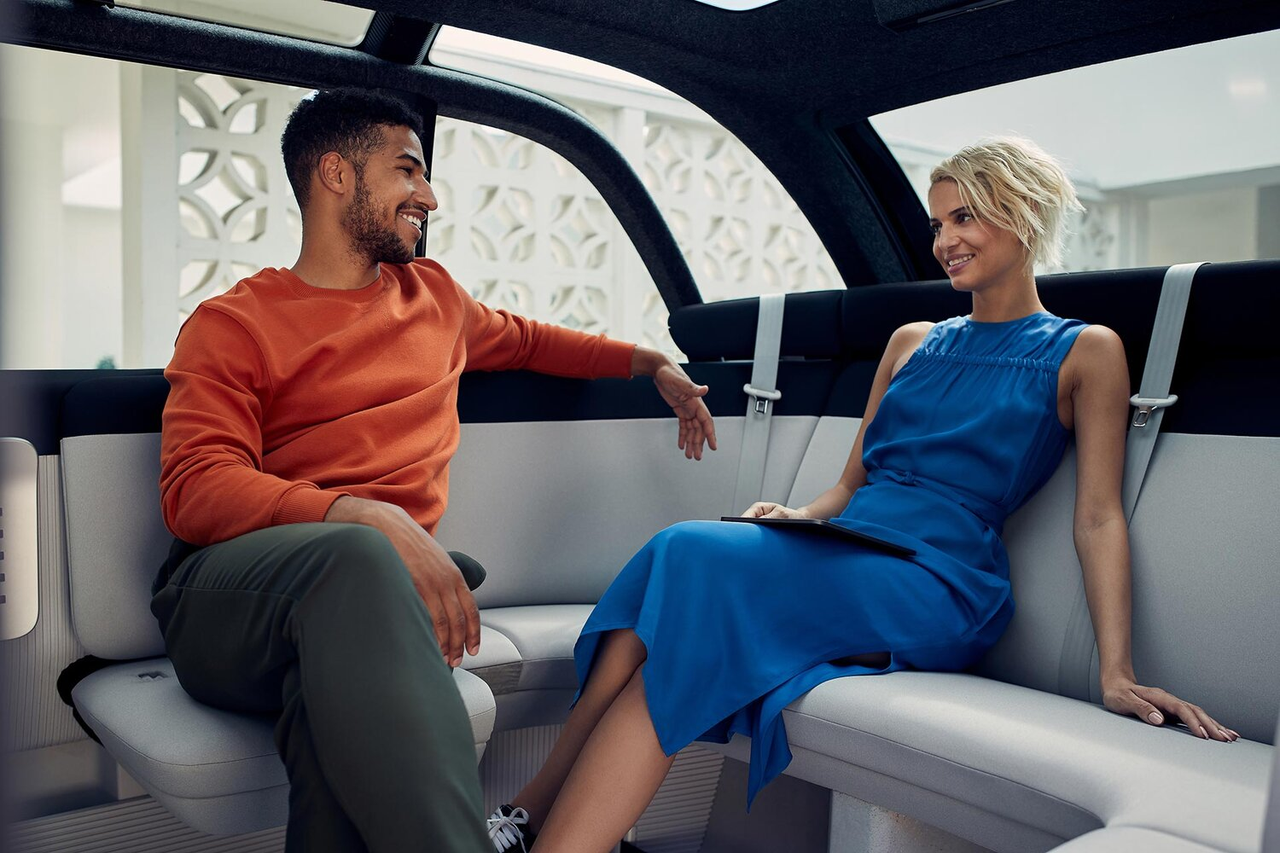
This is Canoo’s official picture, I even saw the model’s legs being cramped, this sitting posture will make someone with long legs feel uncomfortable. Also, the left and right seats are not equipped with headrests, so they have to sit upright, which can be tiring on long journeys.
This made me wonder about the consumer group that the Lifestyle Vehicle corresponds to. They need to travel with seven people, and some seats don’t have to be too comfortable. The first thing that came to my mind was a school bus, but the passenger capacity of 7 people, including the driver, is too small. Perhaps future shared travel will be more suitable?
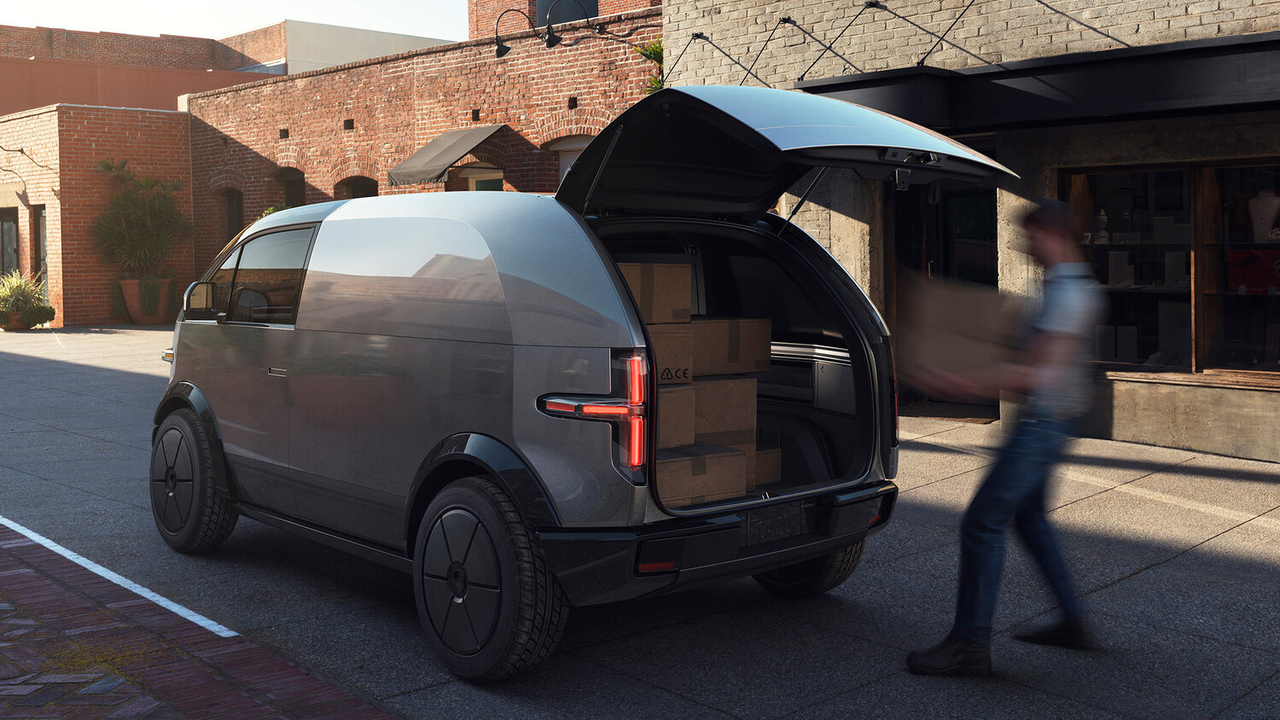
In fact, the back seat is more convenient for carrying goods, and Canoo has indeed planned for such a usage scenario for the Lifestyle Vehicle, but it is even more advanced in the second MPDV.
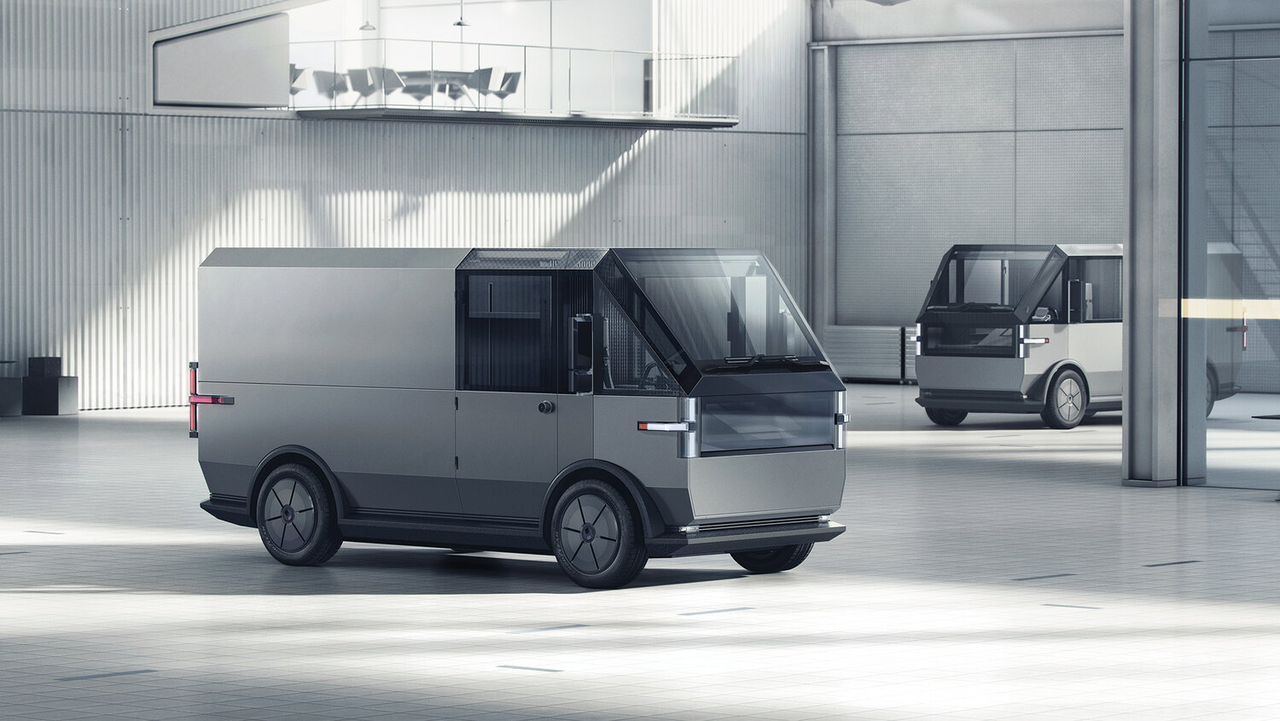 The problem facing MPDV is quite tricky because Canoo has not demonstrated particularly strong purchasing power for this vehicle. As a consumer, I think opening a flower shop or coffee shop is very nice, but I don’t have such a use case. B-side customers don’t care about MPDV’s various considerations, they only care about price and efficiency, and obviously Canoo, which has not yet entered mass production, cannot satisfy these major customers.
The problem facing MPDV is quite tricky because Canoo has not demonstrated particularly strong purchasing power for this vehicle. As a consumer, I think opening a flower shop or coffee shop is very nice, but I don’t have such a use case. B-side customers don’t care about MPDV’s various considerations, they only care about price and efficiency, and obviously Canoo, which has not yet entered mass production, cannot satisfy these major customers.
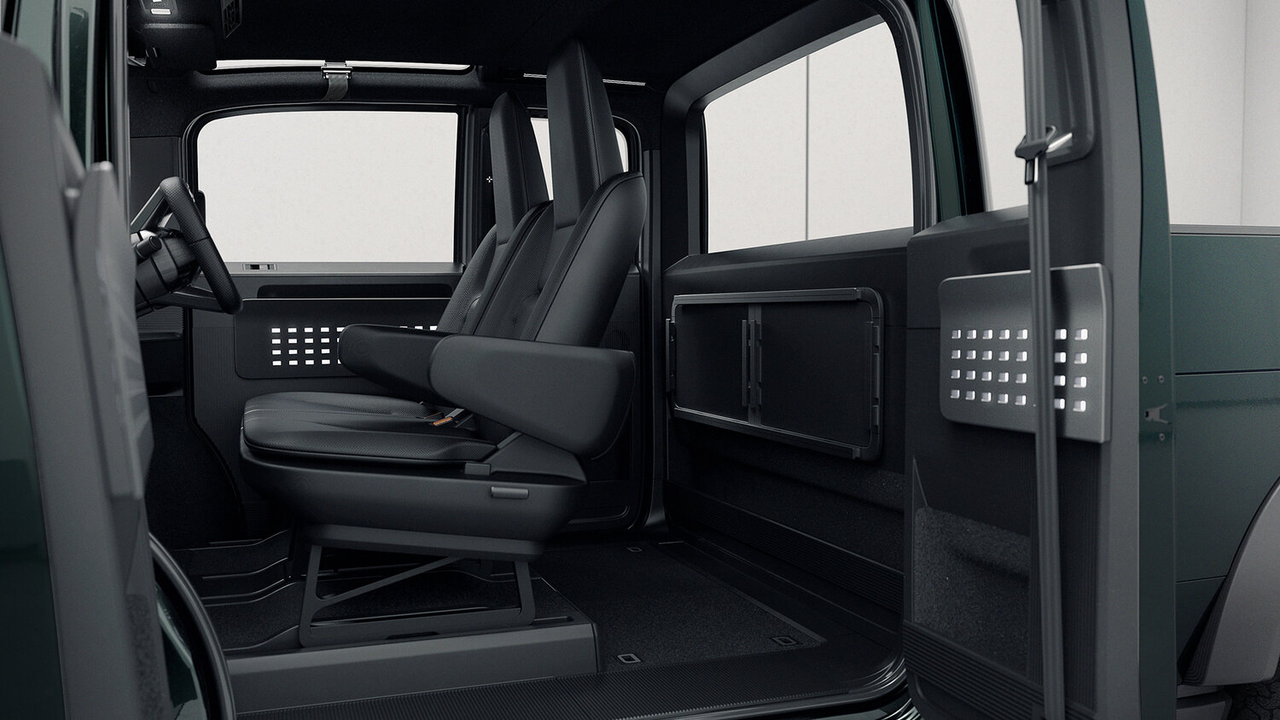
Although the price of this Canoo pickup truck has not been announced, judging from the prices of the first two cars, I predict that the price of this pickup truck should be around $35,000. If we take a closer look, we will find that it is actually a two-seater layout.
From the perspective of the tool attributes of carrying goods and people, this vehicle should not be able to replace the American fuel pickup truck of the same size in the market, and the highlight of the “pea” pickup truck promoted by Canoo is not off-road. This positioning obviously confuses me. Will future people subscribe to this car?
Safety needs to be verified
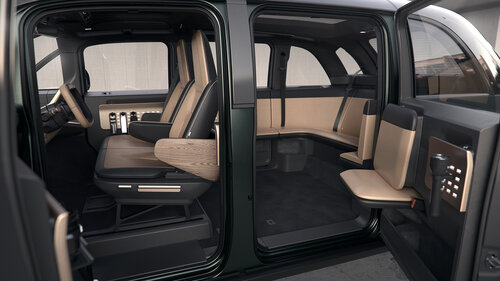
Following the rear-seat design of the Lifestyle Vehicle, the seats are laid out in such a way that the backs of the passengers on both sides are in direct contact with the car door. In the event of a collision, is this safe enough? This raises my concerns about the safety of Canoo models.
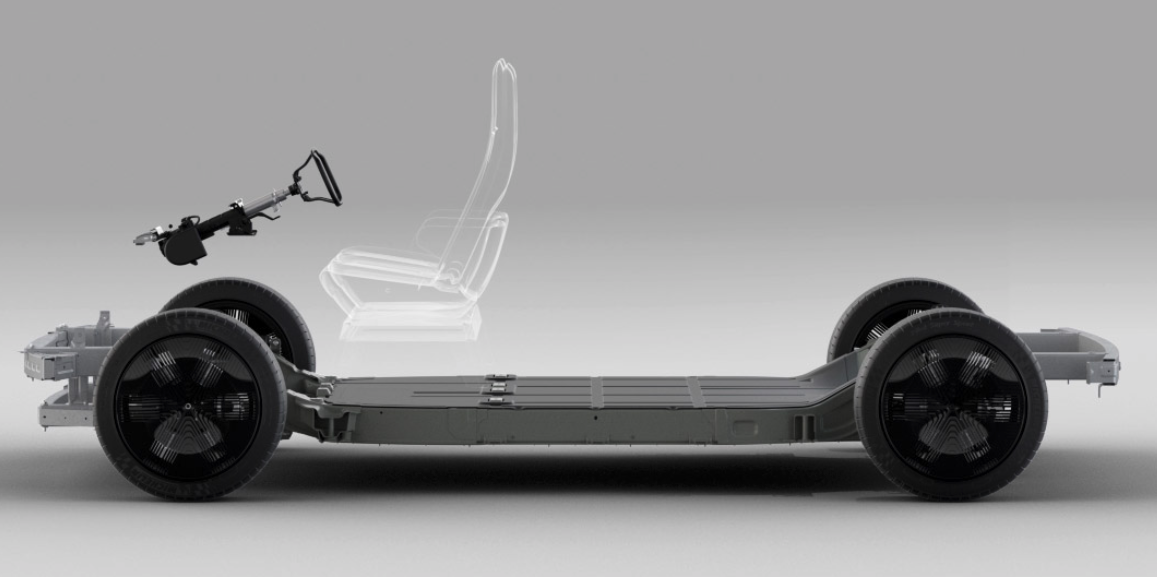
Looking at the above car models, we will find that the “pea-shaped” and “capsule-shaped” Canoo vehicles have a large wheelbase, which is certainly due to the unique advantages of the pure electric platform. However, their front compartments are extremely short. It’s not that short is bad, and many pure electric vehicles now have short front cabins, but Canoo has taken this to the extreme through wire-controlled steering, which makes me have to doubt whether it is safe in the event of a frontal or offset collision.
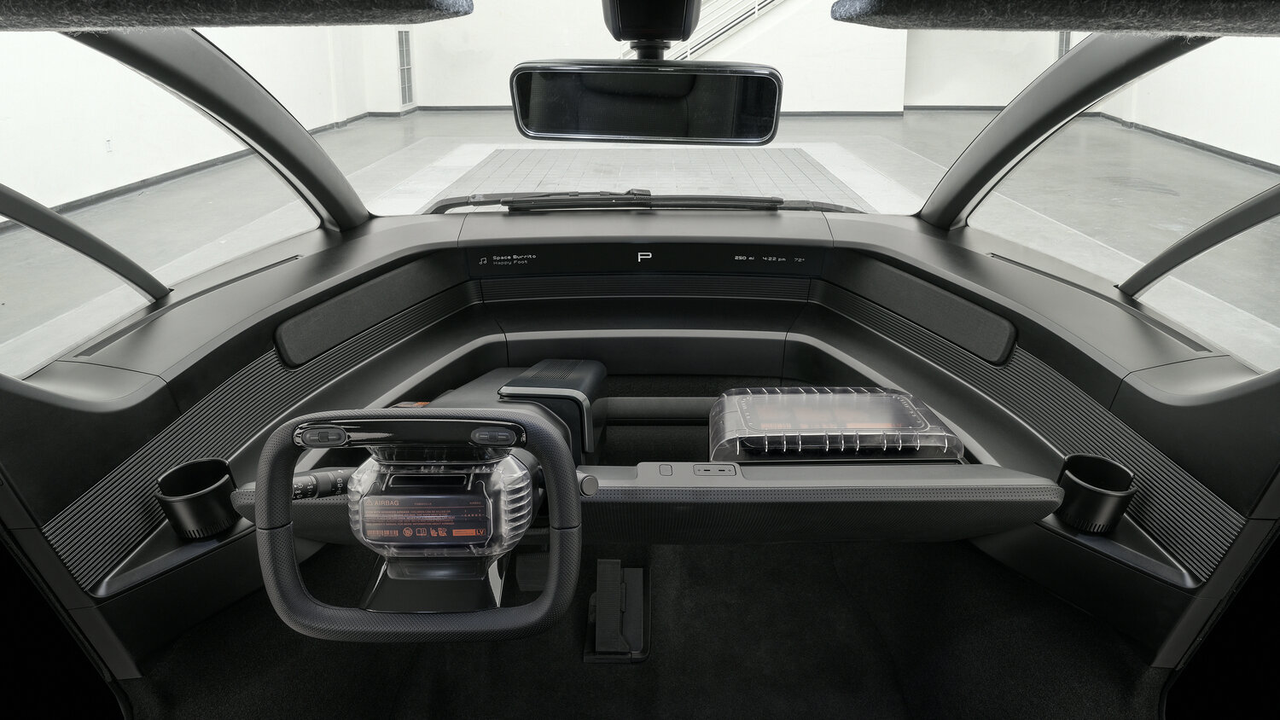
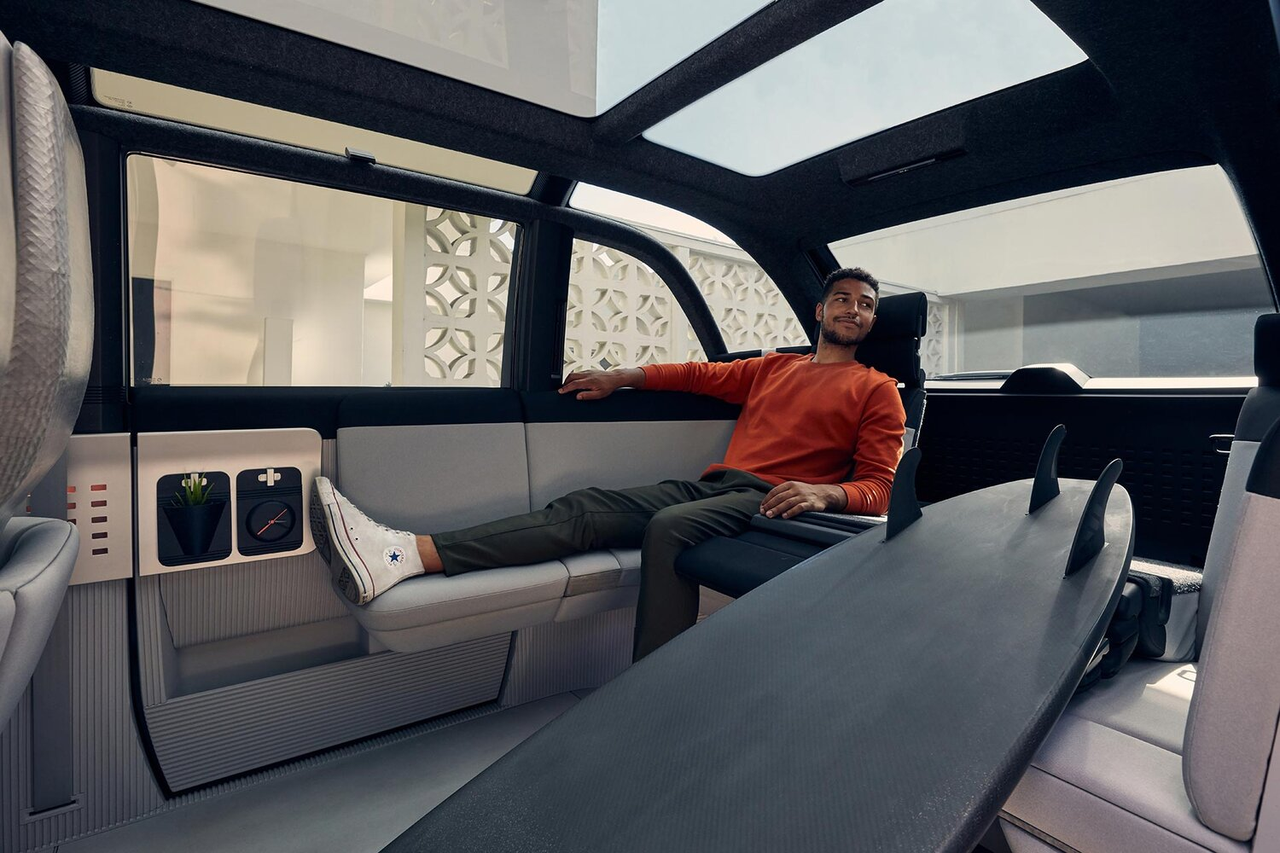 After carefully examining Canoo’s passenger car model, it can be seen that in order to achieve greater transparency, the supporting structural components are not concentrated and appear rather slim. I cannot make a definite judgment on whether Canoo’s car models are inferior in terms of safety, but if they wish to achieve the visual effect portrayed in their images while also attaining normal safety scores, they will need to invest considerable funds in structural verification and the development and use of high-strength materials.
After carefully examining Canoo’s passenger car model, it can be seen that in order to achieve greater transparency, the supporting structural components are not concentrated and appear rather slim. I cannot make a definite judgment on whether Canoo’s car models are inferior in terms of safety, but if they wish to achieve the visual effect portrayed in their images while also attaining normal safety scores, they will need to invest considerable funds in structural verification and the development and use of high-strength materials.
Starting from my doubts about safety arising from the confusing positioning, my positive impressions of Canoo are gradually dissipating, as their car models give me a strong feeling of a PPT and concept car. Looking back at Canoo’s starting price of only around $30,000, I begin to understand.
Production Status
Anxiously, I looked up Canoo’s production plans, current production progress, and order status as a publicly traded company to confirm my somewhat dangerous thinking.
Canoo plans to begin deliveries in Q4 of 2022. On August 16th, Canoo released their 2021Q2 financial report, which showed that their three car models had received over 9,500 orders, all of which are cancellable.
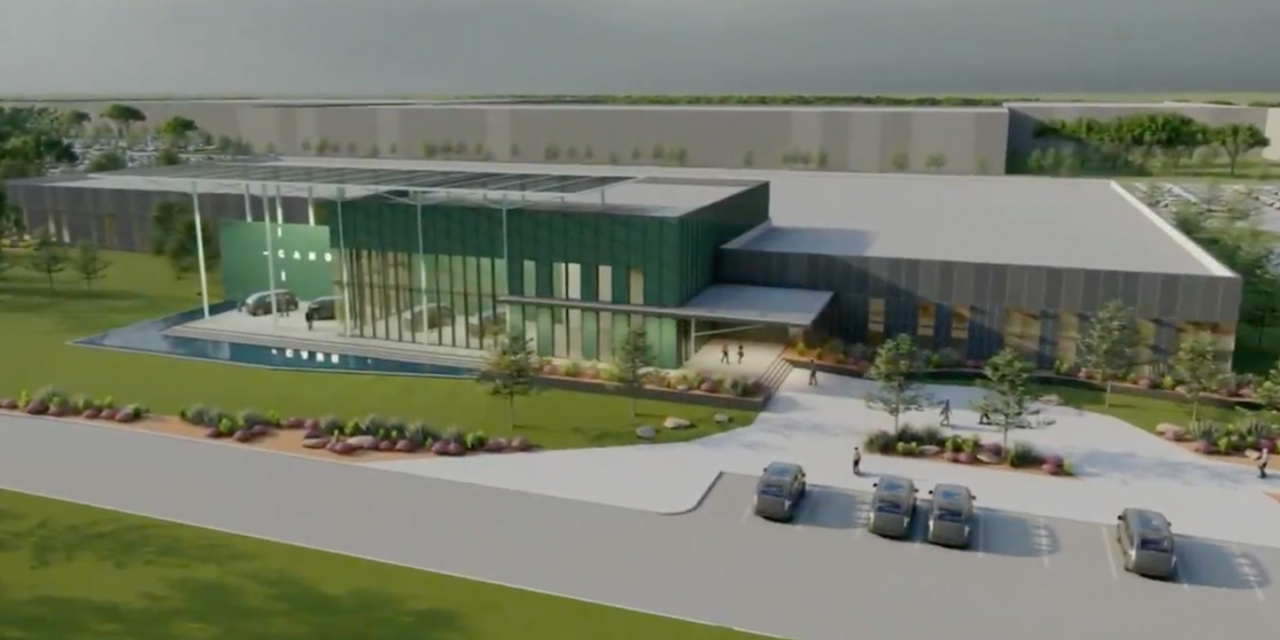
Canoo’s production plan is also intriguing. On June 17th of this year, Canoo announced plans to establish their own manufacturing base in Oklahoma, naming it the “Mega Microfactory”.
The new factory is located in the Tulsa area of the MidAmerica Industrial Park, spanning 400 acres. It will house a paint shop, body shop, and final assembly shop, and will provide 2,000 job opportunities. The key point is that Canoo did not mention a specific production capacity plan, which is somewhat strange given all the information provided.
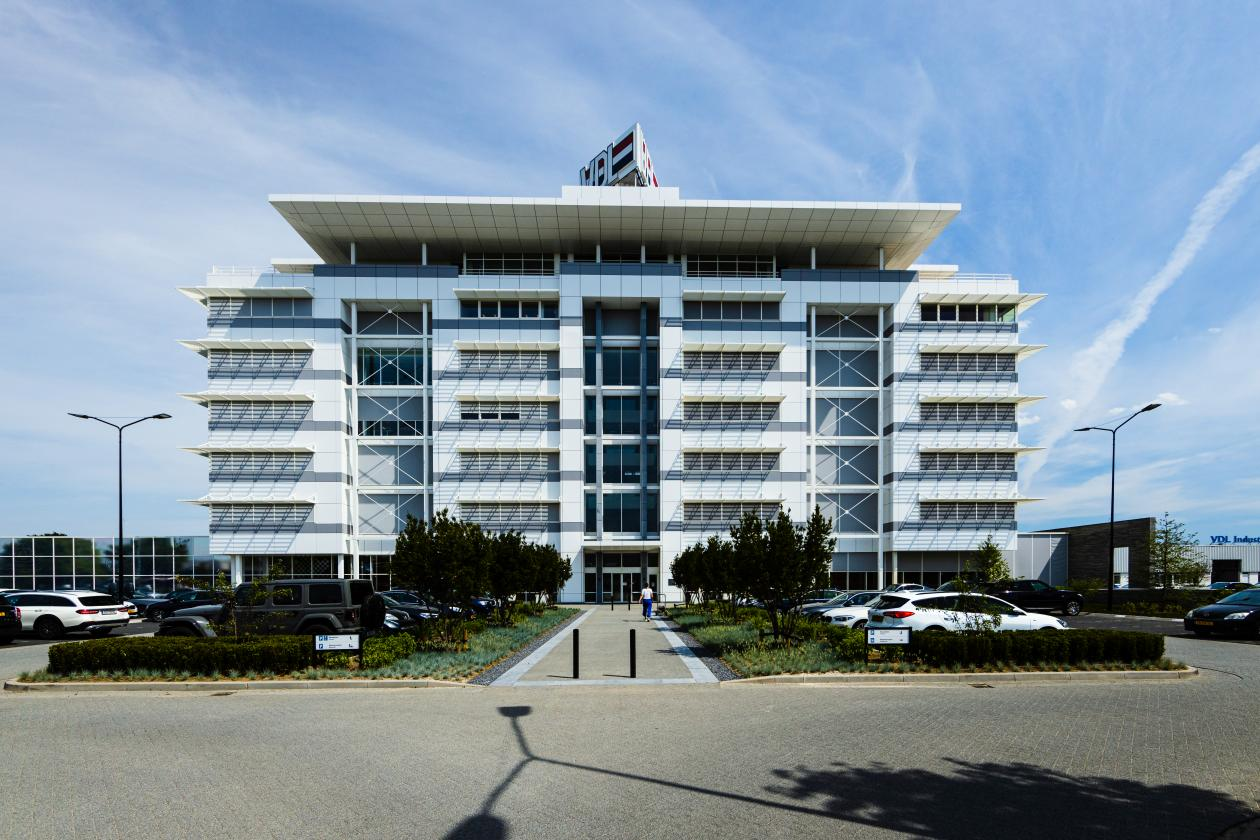
And this Mega Microfactory plan will not be officially operational until 2023, which is obviously later than Canoo’s current delivery plan. Therefore, Canoo has taken a new approach – contract manufacturing. In this regard, Canoo chose VDL Nedcar, which has previously produced vehicles for Volvo, BMW, and Mitsubishi, to manufacture its “Lifestyle Vehicle” first. In 2022, the Nedcar factory will provide an annual capacity of 1,000 vehicles for the US and European markets, with production targets increasing to 15,000 vehicles by 2023.To be honest, when I saw that Canoo was satisfying its production needs through contract manufacturing and building its own factories, my anxious heart was somewhat relieved. However, we still need to address the issue of the vehicle’s price. The new all-electric model, which is priced at only around $30,000, has made significant breakthroughs in both its design and technology, which requires the industry chain to provide supporting upgrades, and this requires additional funds to supply you. Obviously, Canoo, with its low price, is not prepared to do so.
If you want something both good and inexpensive, you can only follow in the footsteps of Tesla, which has created a positive cycle of economies of scale through large-scale production and sales. Otherwise, Canoo’s low price will have too much of that “PPT” flavor.
“Skateboard” Platform
I saw a colleague touting the skateboard platform a few days ago. Coincidentally, this is also the technology that Canoo has emphasized in its promotion. Initially, Canoo even planned to promote the skateboard platform to OEMs for them to develop all-electric models on the platform.
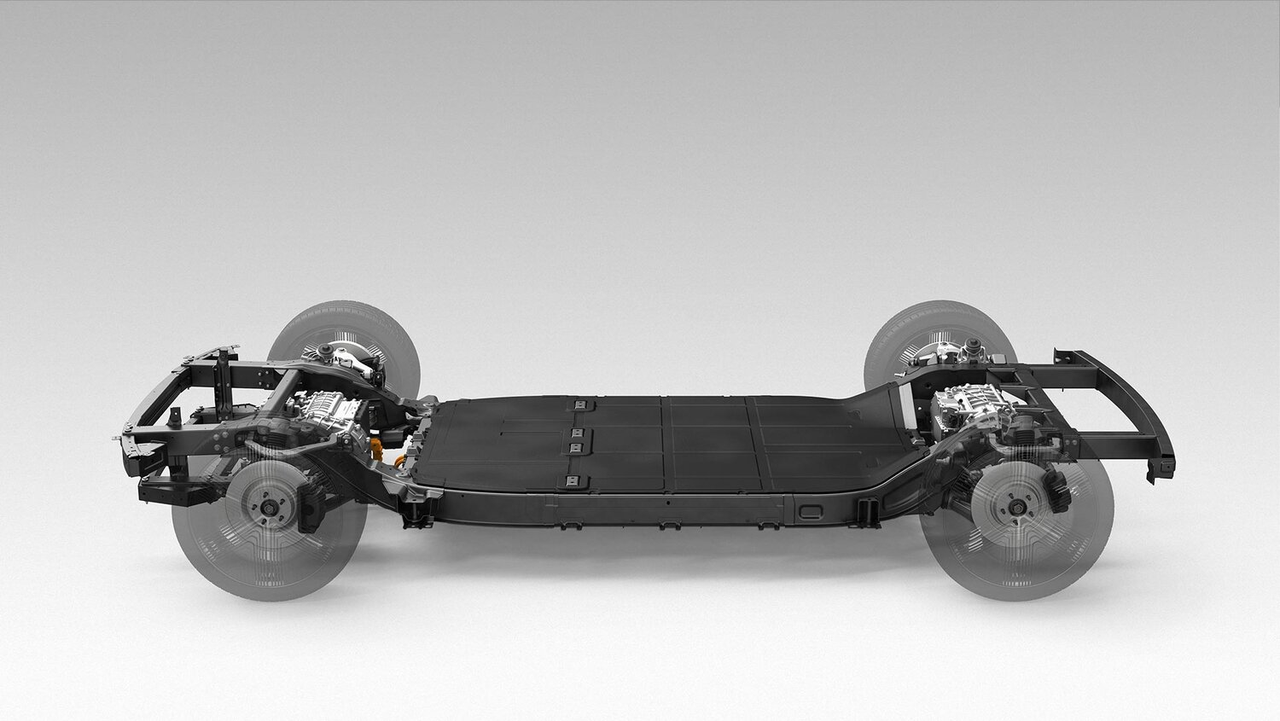
In February of last year, Hyundai Motor Group reached an agreement to cooperate with Canoo on the latter’s skateboard platform. Canoo will develop new all-electric models on the skateboard platform for Kia and Hyundai, and Canoo excitedly referred to Hyundai as a “key partnership.” Dr. Krause believed that this business expansion was a good opportunity to obtain funding and excitedly said:
We have been working diligently to develop a bold new electric vehicle and partnering with a global leader like Hyundai is a validating moment for our young company. It is a real honor for us to help Hyundai explore EV architecture concepts for their future models.

However, the fact is that, in March of this year, foreign media reported that Canoo’s cooperation with Hyundai had terminated and perhaps even led to a dispute over intellectual property rights. Aquila stated that the partnership with OEMs was a little premature.
Canoo CEO and founder Ulrich Kranz, who joined Apple’s car project in June this year, had contact with Apple before. It is said that Apple’s interest was sparked by the skateboard platform, and some media boldly predicted that Apple would directly acquire Canoo, which is not lacking in money.
However, the fact is that Apple directly took Dr. Kranz and did not choose to acquire Canoo to obtain its skateboard platform. Coupled with the news of the previous partnership between Hyundai and Canoo, which was interrupted, I am even more eager to explore this skateboard platform in depth.
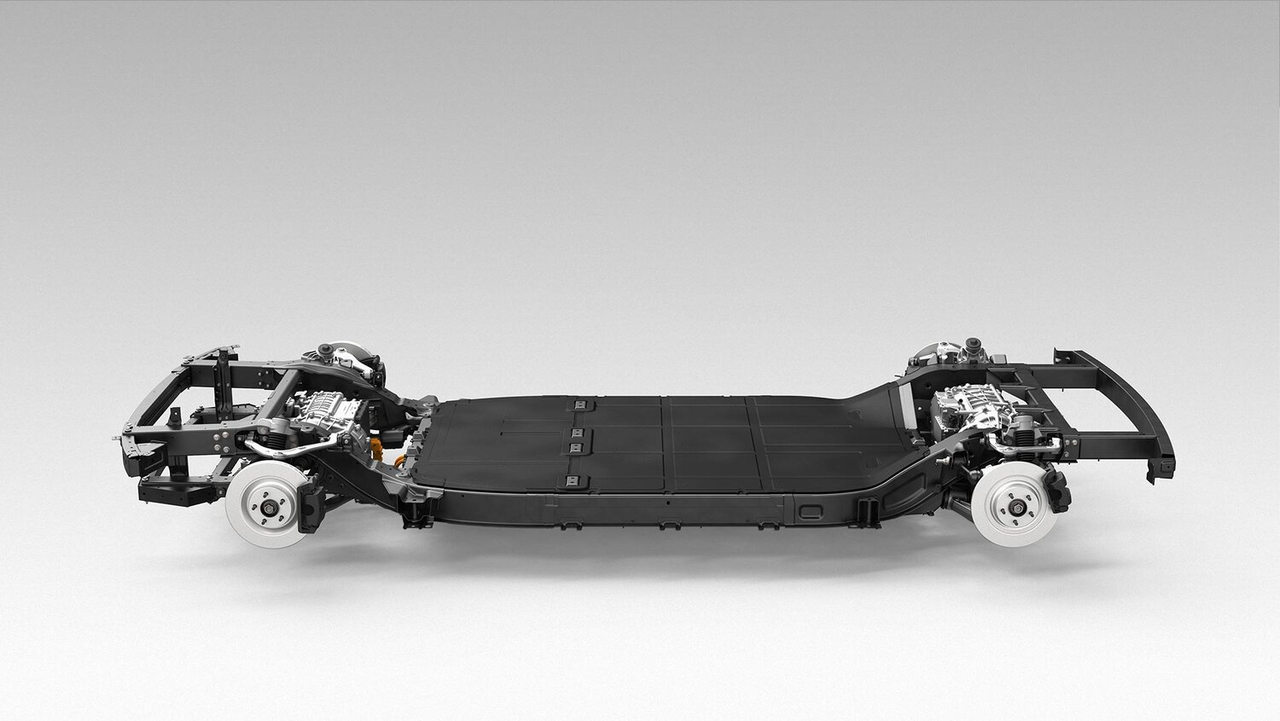
Although Canoo’s current three car models and the future fourth sports sedan are completely different in category, they are all built on the same platform-the Skateboard Platform. I found the introduction of the skateboard platform on the Canoo official website and can be summarized briefly as:
-
High-performance power
-
Wire-controlled steering
-
Integration
High-performance power
The Skateboard Platform supports dual-motor settings (one front and one rear). The front motor can provide a maximum power of about 149 kW and a torque of 320 N·m, and the rear motor can provide a maximum power of about 223 kW and a maximum torque of 450 N·m, which can reach a total power of about 372 kW and a torque of 770 N·m.
Canoo claims that its motor peak efficiency is 97%, and it has been specially optimized for urban environments. It also said that the maximum range of this platform will be greater than 482 kilometers. The Skateboard Platform is a 400V voltage platform, and the battery capacity is between 20-80 kWh.
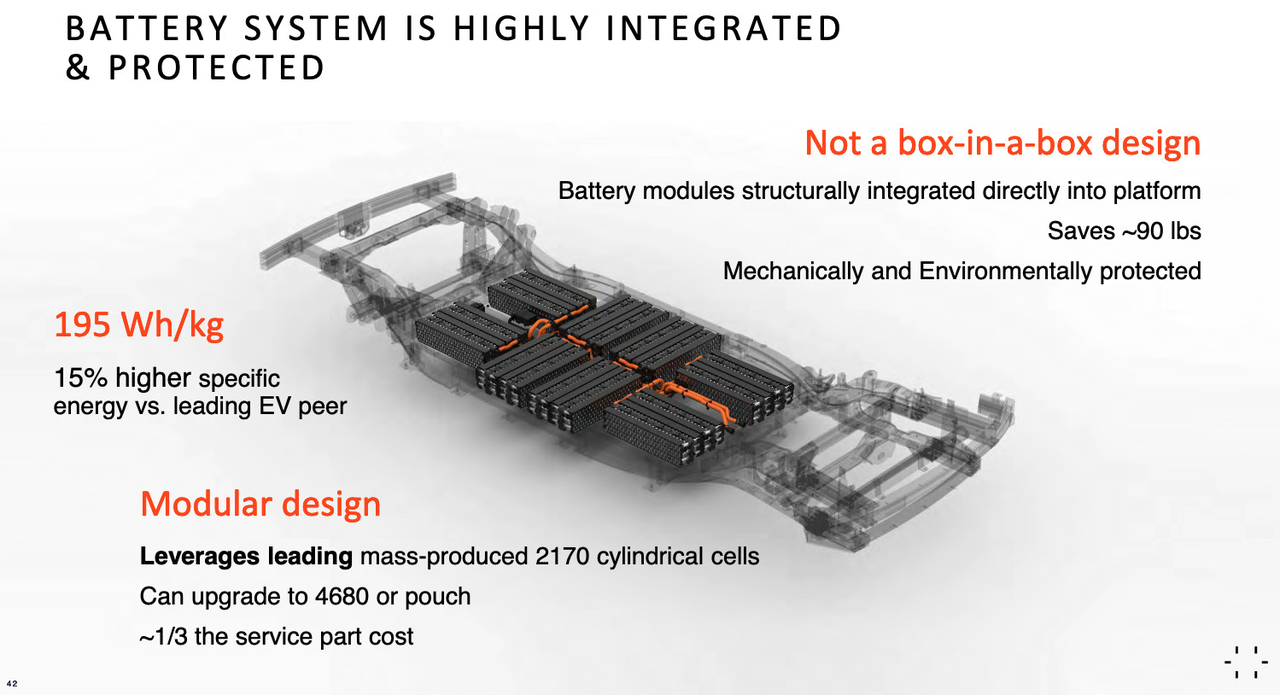
In Canoo’s PPT in June of this year, the battery information of the Skateboard Platform was introduced. The battery pack adopts a modular design and uses 2170 cylindrical batteries, and can be upgraded to the same specification as Tesla’s 4680 battery. And it adopts a packaging form similar to CTC, and uses the battery as a structural member to participate in bearing force, increasing the energy density of the battery module to 195 kWh/kg.
Of course, this is not the core advantage of the Skateboard Platform.
Wire-controlled steering
Regarding its wire-controlled steering, Canoo proudly claims to be the industry’s first truly wire-controlled steering system, but the specific technical solution has not been announced.
Thanks to the application of steer-by-wire technology which eliminates the mechanical hard connection between the driver’s cab and skateboard platform, Canoo can place the steering wheel more freely in the cockpit, supporting the flexible layout of Canoo’s different models to maximize the use of the interior space.
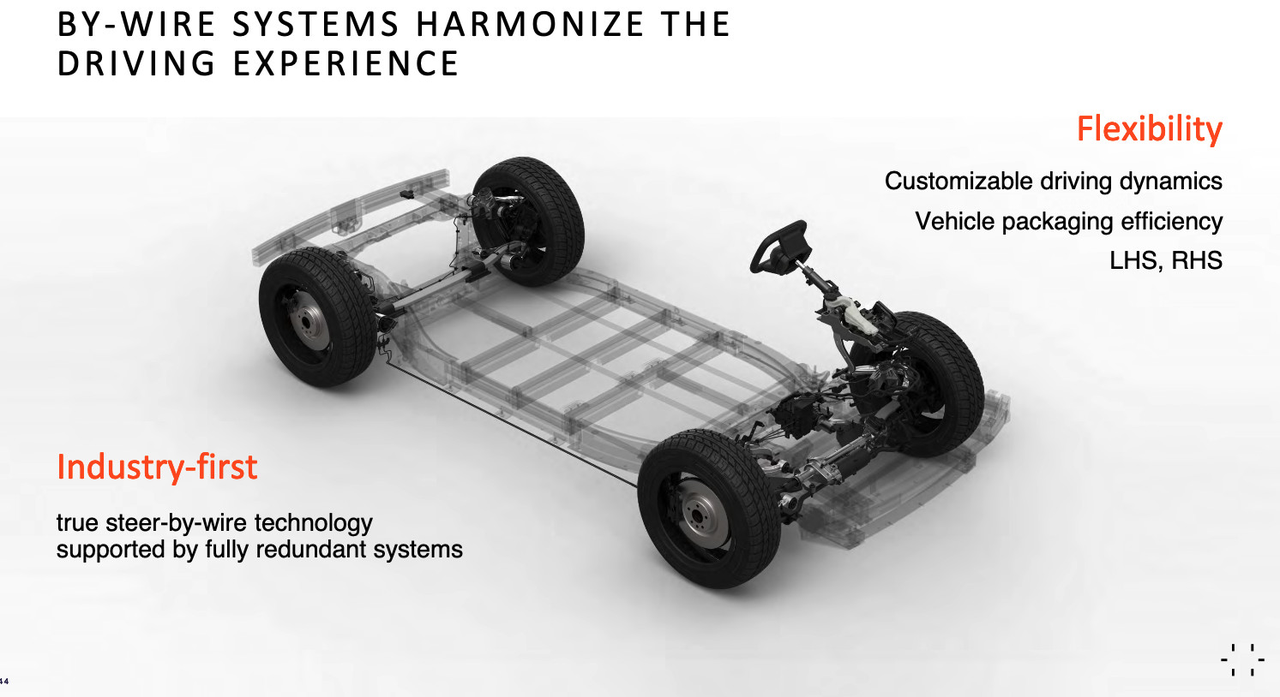
Moreover, the steer-by-wire technology allows torque and steering ratio to be freely adjusted by software, making it possible to customize different steering styles according to user preferences and specific vehicle uses.
Canoo noted that this steer-by-wire technology is designed for L4 autonomous driving in the future.
Integration
We have revolutionized the platform design concept with a chassis that can be easily married with different cabins, with little adjustment, enabling us to get new vehicles on the road faster and cheaper. By keeping the most critical and expensive part of the vehicle uniform in all our models, it allows us to rapidly and cost-effectively bring to market a full line-up of EVs.
Dr. Krause outlined the advantages of the skateboard platform in a very concise manner. Canoo divides the vehicle into two major components: the driver’s cab and the chassis. Suspension system, transmission system, battery compartment and battery thermal management system, power electronics, vehicle control system, collision absorption structure and autonomous driving components are integrated on the skateboard platform, or chassis.
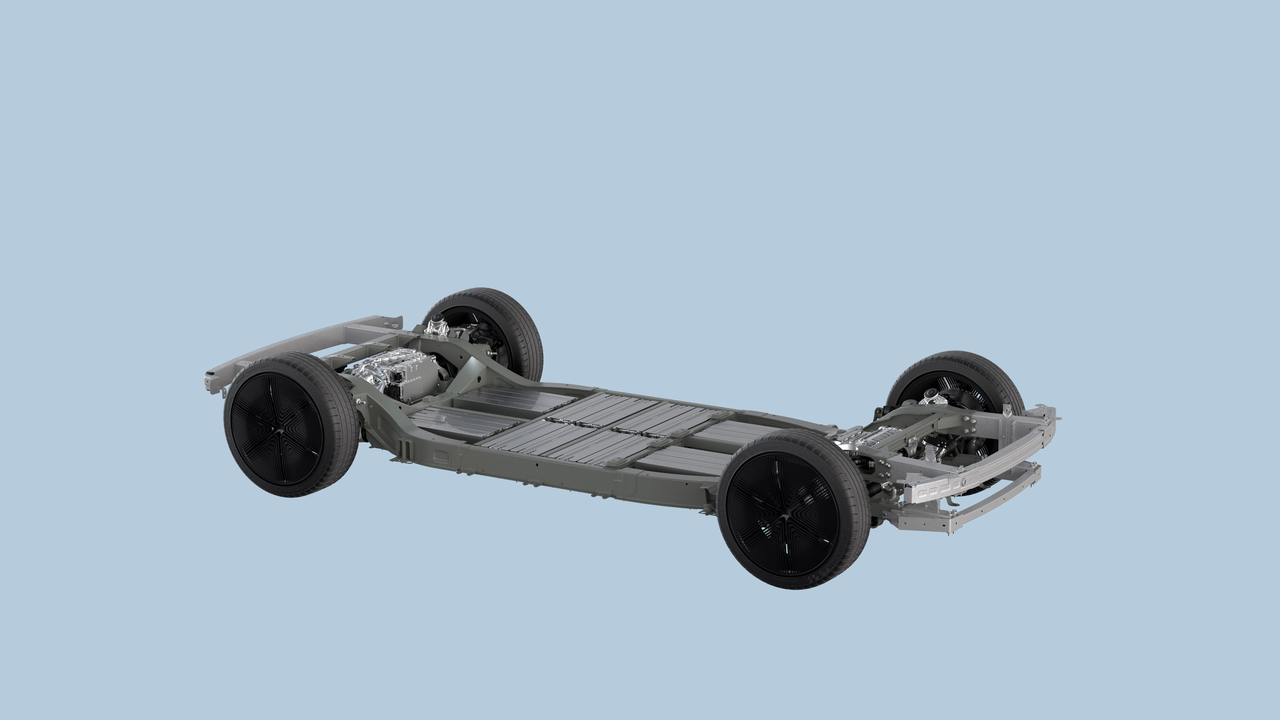
By simple adjustments, different driver cabs can be adapted, and the development of various models can be achieved at a controllable cost. According to Canoo, their skateboard platform can meet over 75\% of the most common passenger and light commercial vehicle types on today’s roads.Translate Markdown text into English Markdown text, retaining HTML tags inside Markdown, and only output the corrected and improved parts in a professional way.
Through a unified platform, Canoo also reduces R&D, testing, and production costs, and the development time for new models can be as short as 18-24 months. In summary, its advantages are fast and inexpensive.
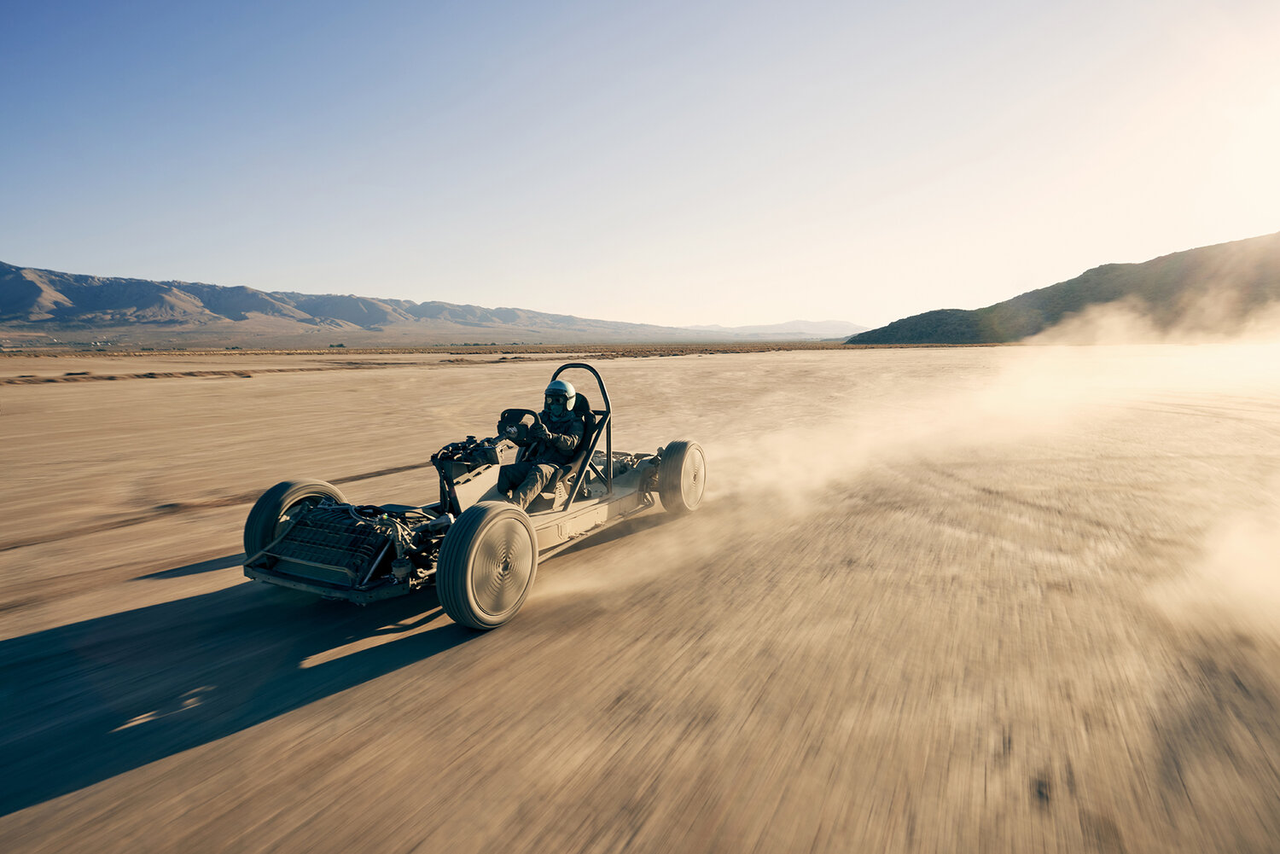
In September last year, Canoo showcased the advantages of its skateboard platform through a video. They added seats and steering to their skateboard platform, turning it into a larger go-kart that can be easily reconfigured.
Is the Skateboard Platform just a Gimmick?
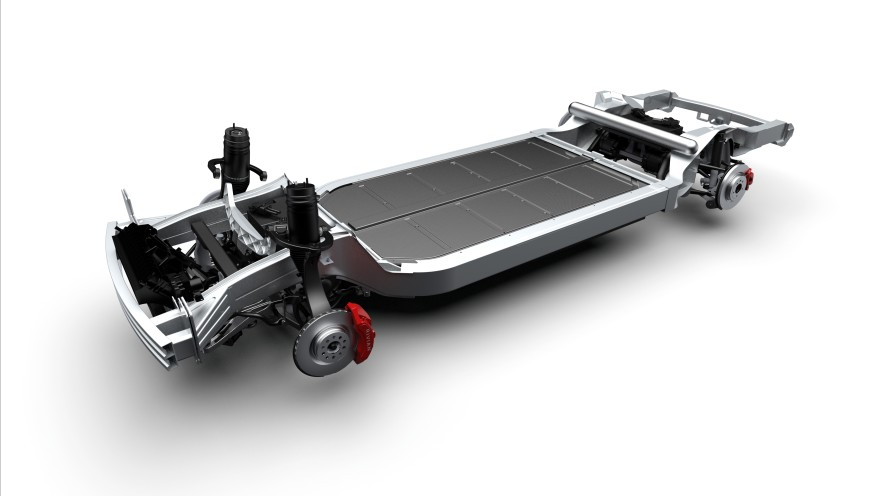
(Rivian’s skateboard platform)
The concept of the skateboard platform has been experimented by many companies worldwide. For instance, Rivian, which I have previously written about, has integrated batteries and suspensions into its own skateboard platform, which can accommodate up to 4 motors, and used it to create its R1T pickup and R1S SUV.
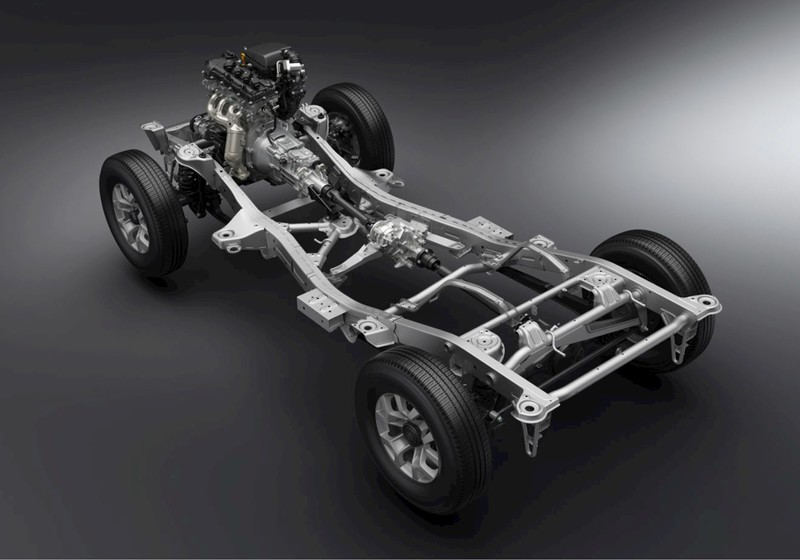
I found a picture of a non-load-bearing body, and as soon as I looked at it, I realized that Rivian’s skateboard platform, minus the internal combustion engine and plus a flat battery, looks more like an electrified version of a non-load-bearing body, which further supports their current pickup and SUV models.
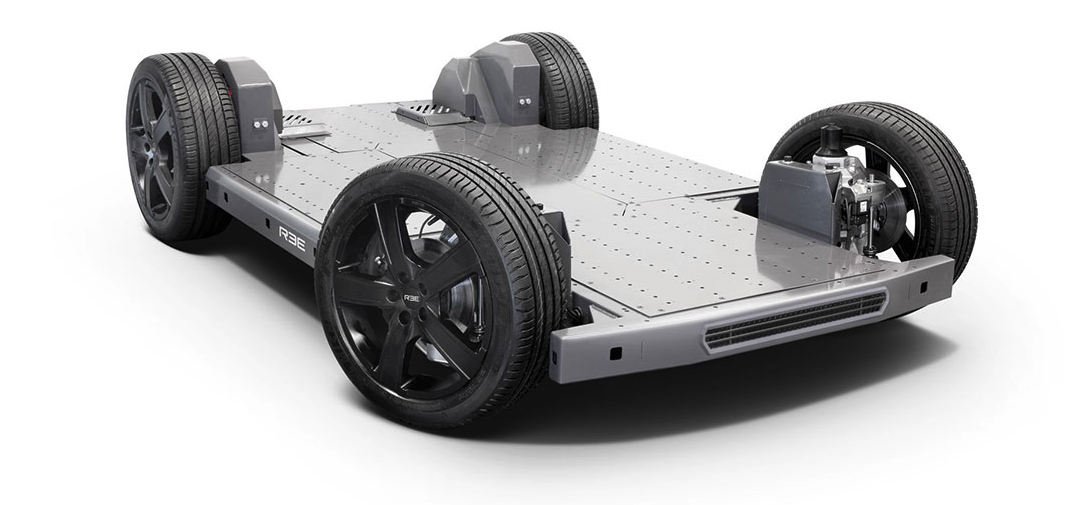
(REE’s skateboard platform)
There are many companies both at home and abroad that have ideas similar to Canoo’s. For example, REE Automotive, an Israeli company, has integrated many components into its platform that are suitable for various commercial vehicles.
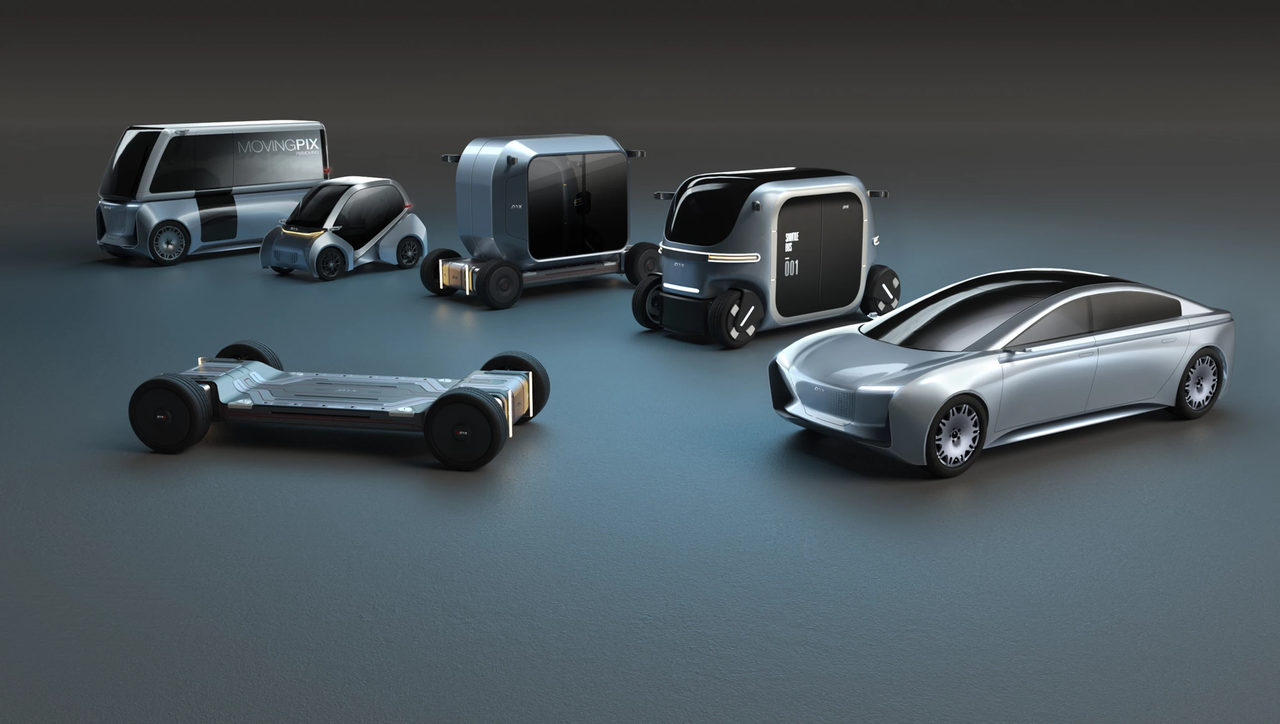
(PIX’s skateboard platform and applicable models)
A company called PIX in China is also developing a skateboard platform, but its customers are not car manufacturers but transportation providers, and the majority of its products are various types of minibuses.
PIX has even taken things a step further by integrating steering, suspension, motor, transmission, and brake functions into a wheel that can be easily remove and exchange, achieving remote control capabilities for driving, steering, and braking, among others.After reading so many examples, I don’t know how everyone sees the “skateboard platform”. I actually prefer to understand it as a platformized subdivision field, a highly integrated chassis system. The main purpose is to achieve the development of multiple vehicle models through low cost and flexible layout.
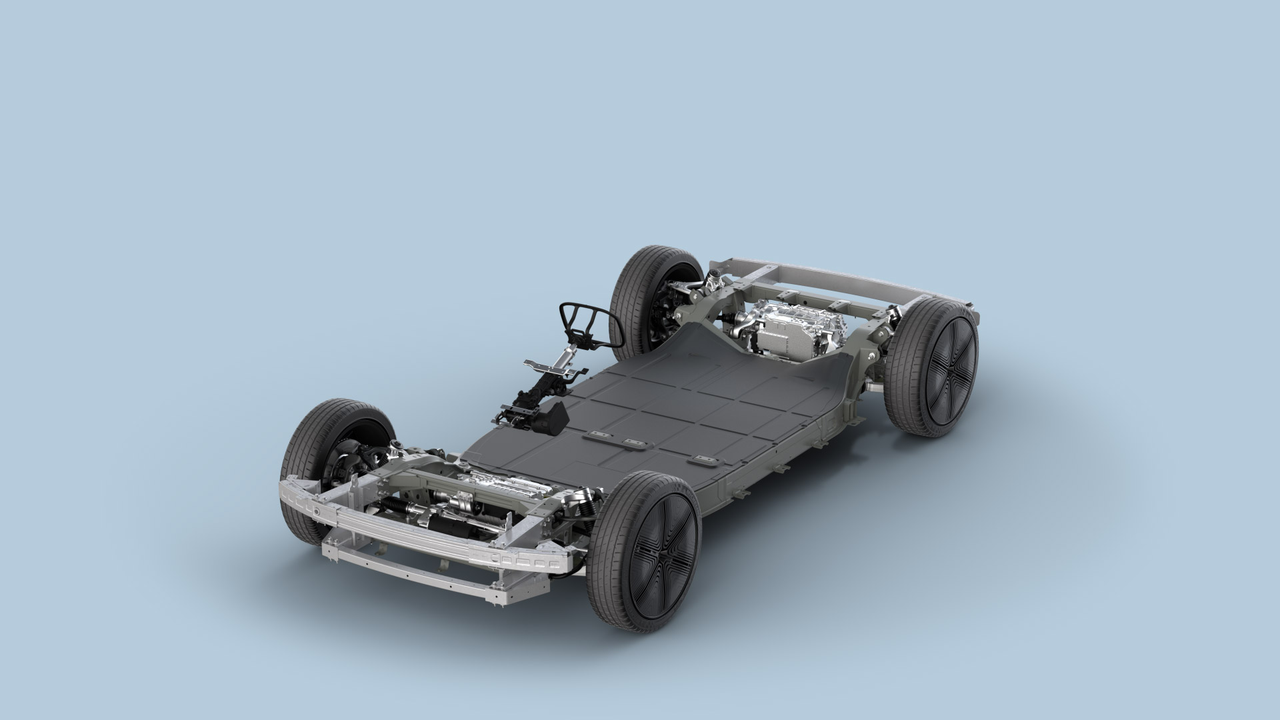
However, the highly integrated chassis itself requires higher development costs, such as technology like wire-controlled steering, and cannot prove that the lowest cost can be achieved in economies of scale. At the same time, due to the fact that the expandable part of the highly integrated chassis is concentrated in the interior of the cabin, I believe it will limit the decoupling of future intelligent cars in hardware and software, and cannot transform into the most intelligent cars.
We know that Volkswagen has pure electric platforms such as MEB, PPE, and SSP, and Geely also has the vast SEA platform. Currently, these platforms are mainly oriented towards traditional styles such as sedans and SUVs, and it is not difficult to achieve highly integrated chassis like the “skateboard platform”. I think it is just that OEMs face a diverse range of demands in a broad market and have no need to quickly advance at low cost.
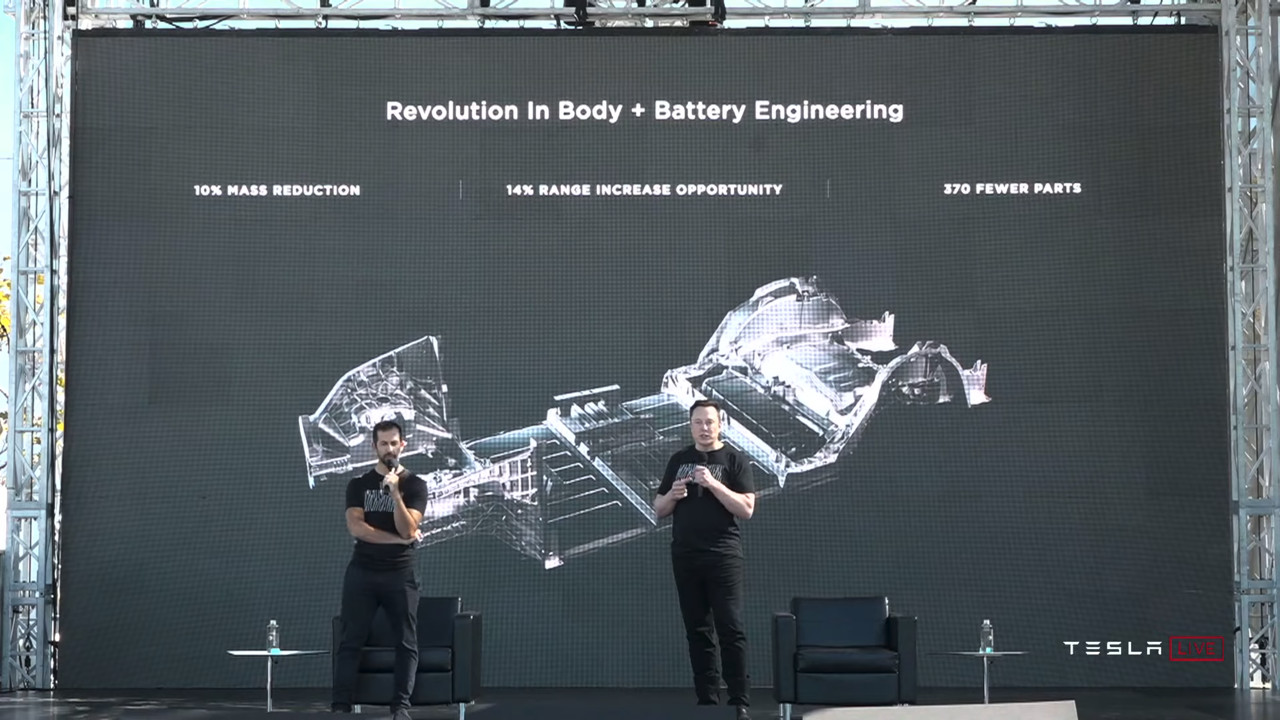
The CTC technology proposed by Tesla at last year’s Battery Day, and the one-piece casting that various OEMs are following suit, all indicate that integrating the chassis and battery into one is a development trend of integrated vehicle bodies in the future. And on this trend, Canoo did not gain a monopoly on technological advantages.
Apple obviously won’t choose a car sea tactic at the beginning of car manufacturing, so the choice of Dr. Krantz is more focused on his experienced R&D and production of electric vehicles, rather than Canoo’s claimed “good and cheap” skateboard platform. And Hyundai’s separation from Canoo obviously also discovered that Canoo or their skateboard platform had significant problems.
Canoo’s ADAS
Regarding the currently popular field of assist/autonomous driving, I don’t feel that Canoo is completely keeping up with it on their official website, which seems to be their focus of promotion.
But how could Canoo completely not keep up with this hottest field? They expect to achieve L2 or L2.5 assisted driving ability in 2021, and have extended the subscription system to assist/autonomous driving software.
Taking the Lifestyle Vehicle as an example, an ADAS system composed of 7 cameras, 5 millimeter wave radars, and 12 ultrasonic radars can achieve mainstream L2-level assisted driving capabilities when launched.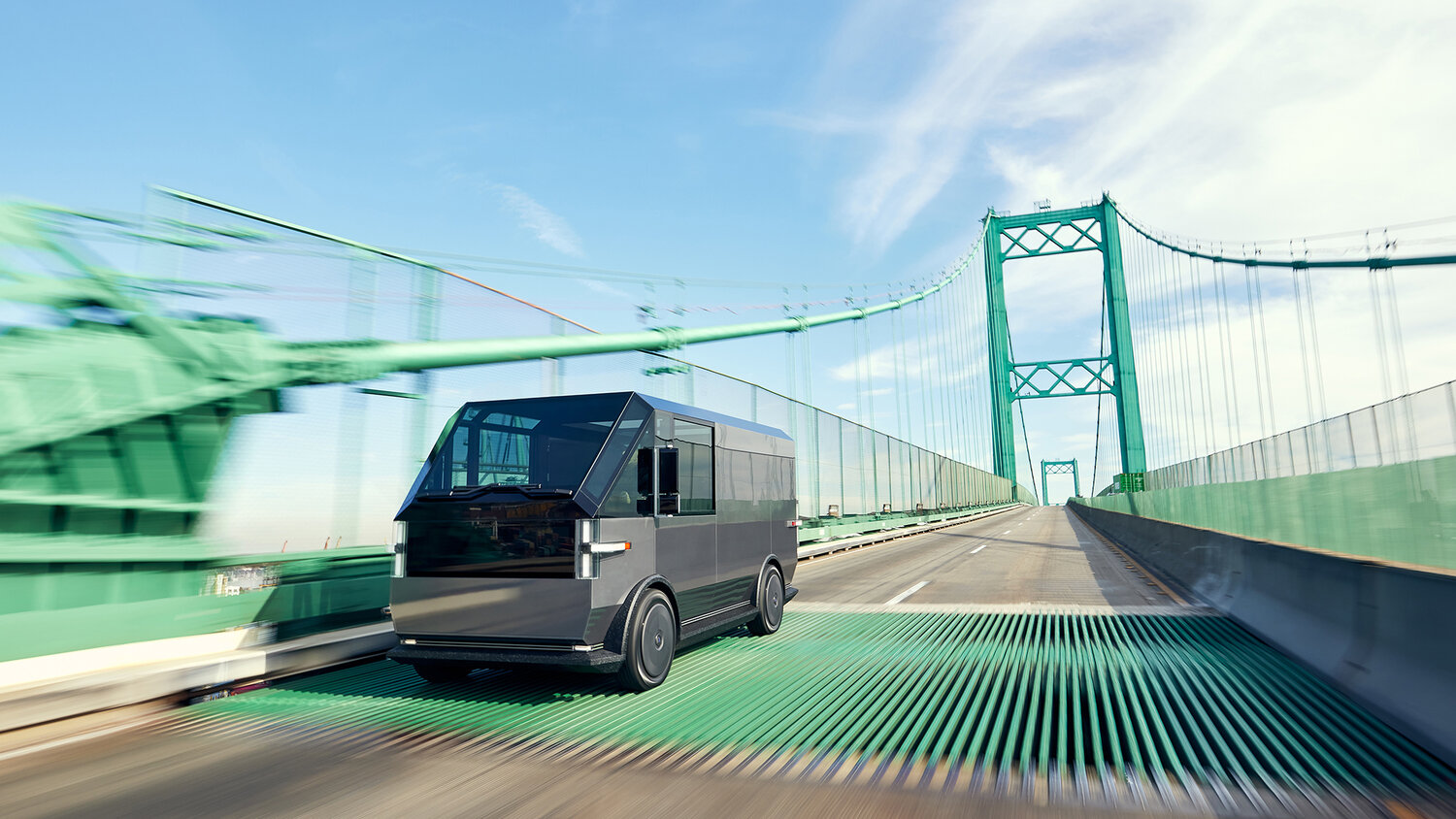
Like almost all new forces in China and abroad, Canoo chose the more open NVIDIA DRIVE AGX platform from the beginning. David Arft, who is responsible for system integration at Canoo, uh, was previously at Faraday Future. He believes that NVIDIA’s platform is not only open, but also supports the expansion of new functions, which is exactly what they need.
For a start-up company like Canoo, which is relatively tight on funds, it is impossible to expect completely self-developed ADAS software and hardware.
So Canoo chose to cooperate with BlackBerry, and the entire ADAS system, as well as ultrasonic radar, millimeter wave radar, and camera are provided by BlackBerry, and BlackBerry also authorized Canoo to use QNX OS for Safety 2.0.
However, recently, there has been little news about Canoo’s ADAS, and I don’t know how they’re doing now.
Personnel Changes
After understanding Canoo’s products, production progress, and technical route, I generally confirmed my disappointed attitude towards Canoo. It’s really just a PPT company. After learning about Canoo’s personnel changes, I seemed to see that Canoo’s future would be a mess.
But this also aroused my interest in Canoo’s personnel changes. Whose hands did such technical routes and product planning come from?
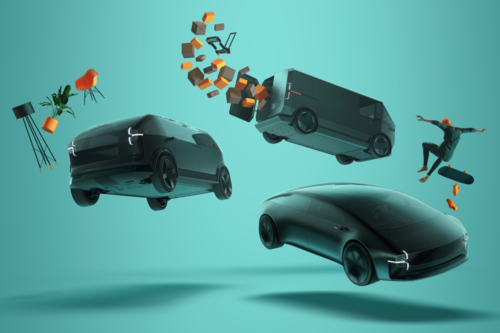
Canoo was founded by Stefan Krause, Ulrich Kranz, and Richard Kim at the end of 2017.
It’s true that these three people have a close relationship with Faraday Future.
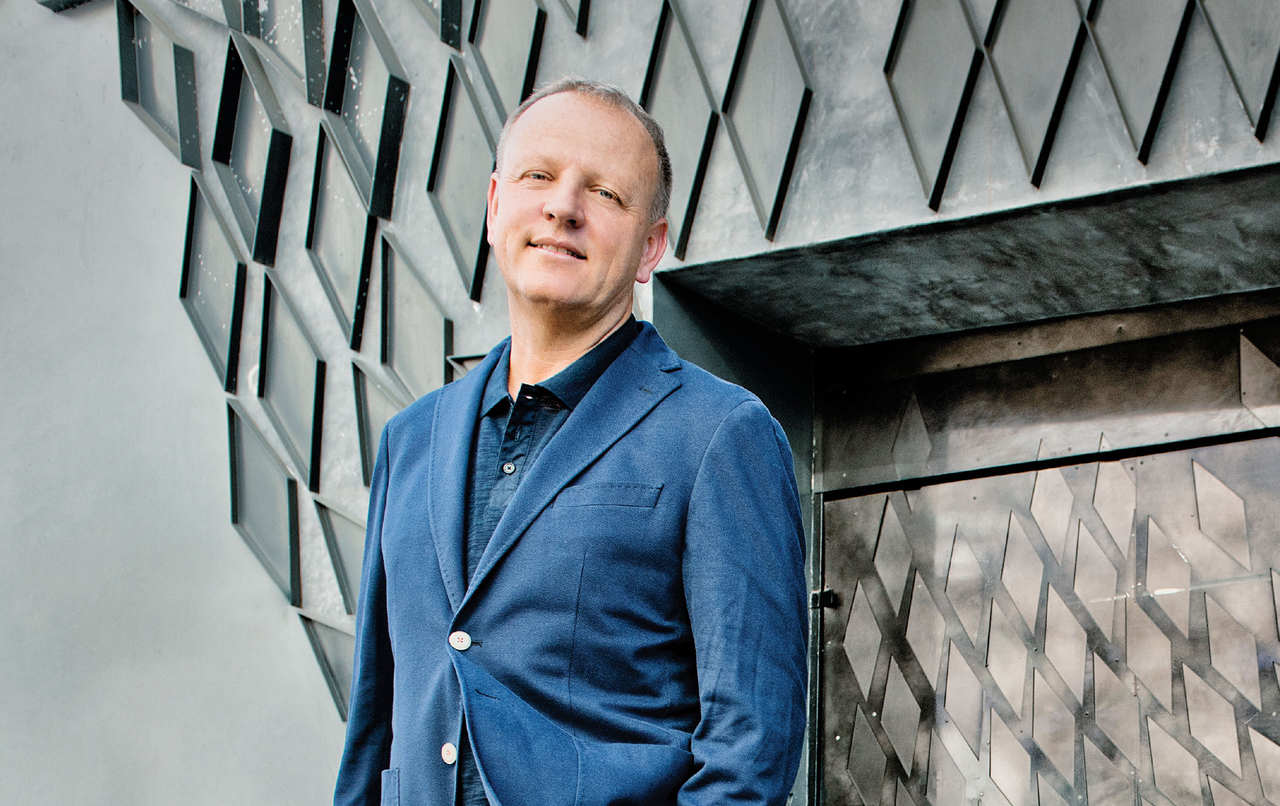
This Krause is a German-Colombian. He began working at BMW in 1987, and has been engaged in finance-related businesses. In 2002, he was promoted to CFO of the entire BMW Group. Starting in 2008, Krause began serving as CTO of Deutsche Bank. Later, he resigned due to the Libor scandal and has served as an advisor or board member for some private equity firms since then.
Until March 2017, Krause received an invitation from Mr. Jia and came to Faraday Future as CFO/COO to solve financial and financing problems.
In July of the same year, Kraenzle was also invited by Faraday Future to be the CTO.
Dr. Kraenzle is a technical genius. In 1986, he joined BMW’s R&D department and was responsible for the development of the Z3 coupé and BMW’s first SUV X5. Especially for BMW, the X5 was so important that it won’t be elaborated here. But most importantly, Dr. Kraenzle was in charge of Project i, also known as “Father of the i3 electric car”.
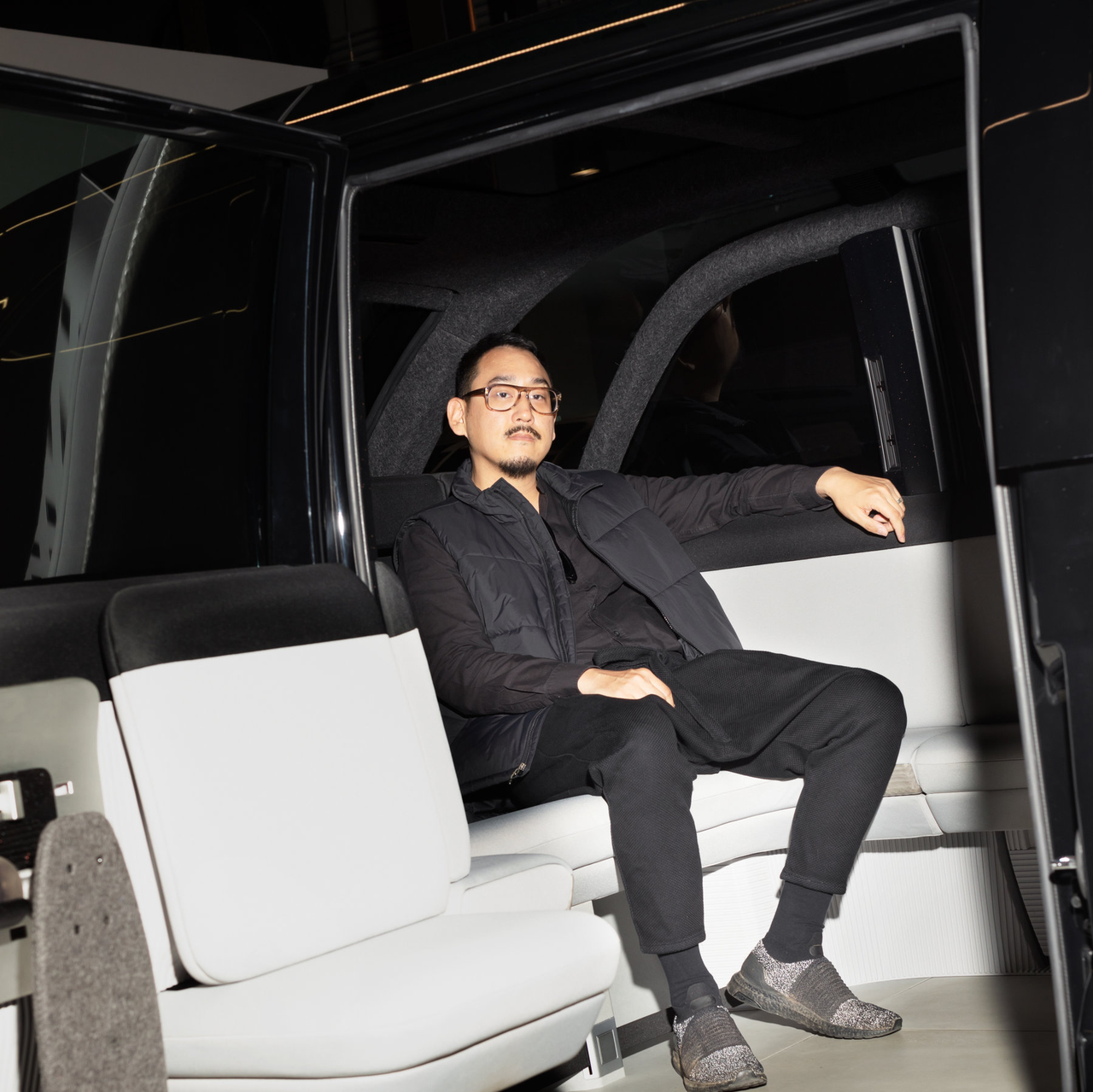
Another Korean-American design genius, Richard Kim, is also well known to everyone.
His works include BMW X1, i3, i8, and more. But he joined Faraday Future earlier than the above two people in 2015, serving as Vice President of Design, Branding, UI/UX and Experience. So my personal guess is that it might be designer Kim who served as a go-between and brought Mr. Jia and the above two together.

Here’s a side note: we have to express our regret for the talent loss in BMW’s i department. At that time, BMW was led by Harald Kruger, who was relatively passive about electrification reform. As a result, not only the i department of BMW but also talent loss within the BMW Group was severe.
In 2016, Carsten Breitfeld, the project manager of the i8, Dirk Abendroth, the powertrain manager of the i series, Henrik Wenders, the product manager of the i series, and Benoit Jacob, the design director of the i series, were snatched away by China’s electric vehicle start-up company, Future Mobility, also known as Harmony Futeng.
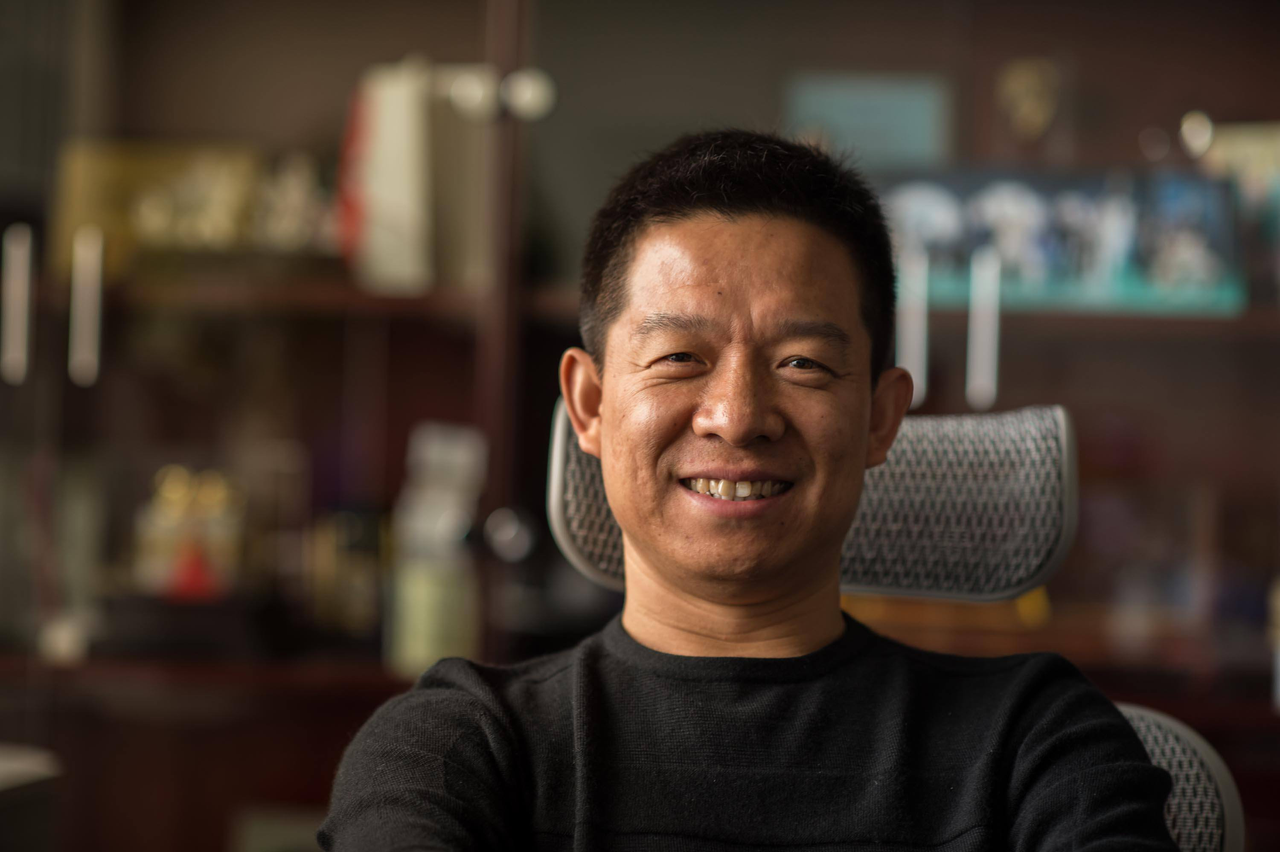
Meanwhile, Dr. Kraenzle and Klaus were recruited by Mr. Jia. However, the two did not work happily at Faraday Future, choosing to leave after only six months due to disagreement with Mr. Jia.In October 2017, the two of them left Faraday Future, and in December, Jin Designers also left Faraday Future. They joined forces to establish the predecessor of Canoo, Evelozcity.
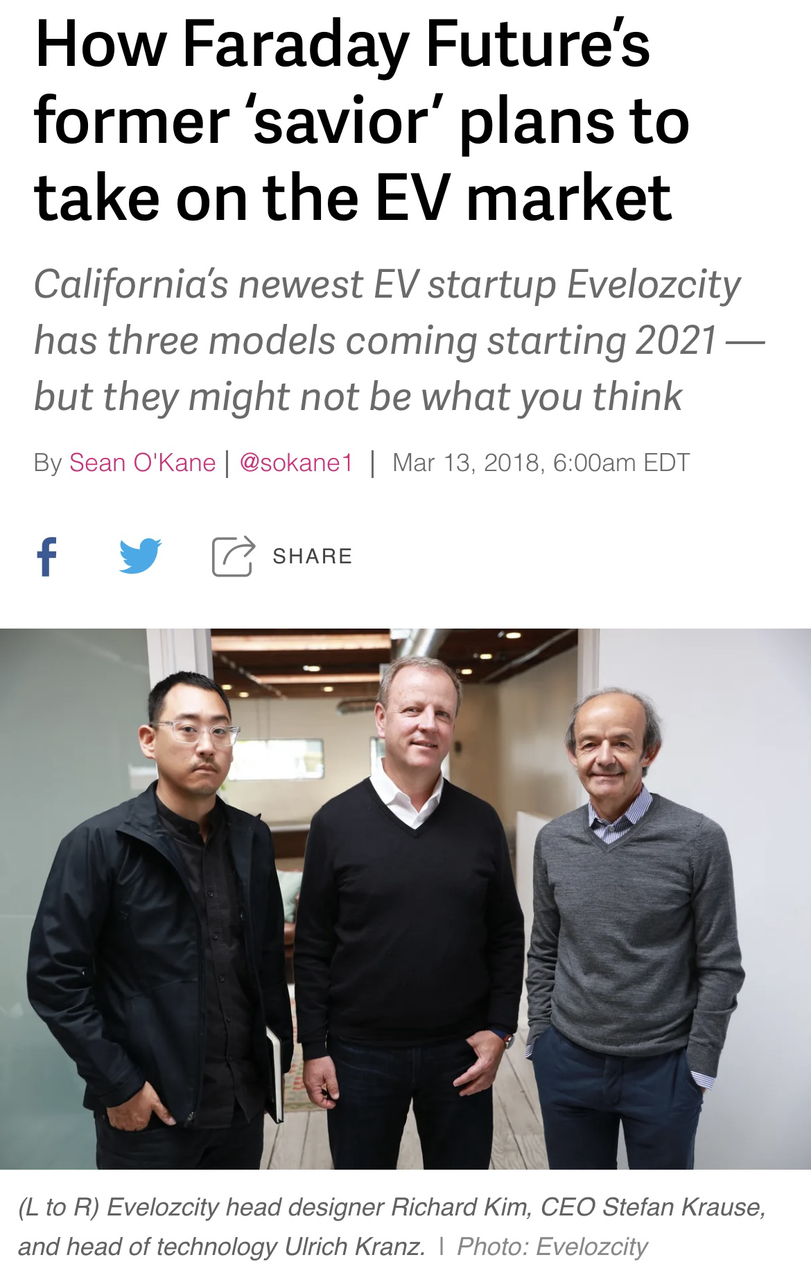
These three big shots were responsible for design, financing and operations (CEO), and technology (CTO), and were considered the core pillar figures of Faraday Future. Originally, they were asked to help Faraday Future through its crisis, but unexpectedly, they left to start their own business in the midst of the crisis, and took away many of Faraday Future’s employees. Jia Yueting must have been beating his chest and stamping his feet.
In the early stages of Evelozcity’s establishment, it is said that Faraday Future made many small moves against their financing, and even directly accused Klaus of “malfeasance and dereliction of duty,” and “possible violation of law” on the official website.
Although many high-level and middle-level leaders of Canoo were extracted from Faraday Future, as the saying goes, “It’s easy to win the throne but hard to keep it.” The founder’s “Three Swordsman Alliance” now only has Jin Designers left in Canoo.
In August 2019, Klaus resigned from the CEO position, and then in June 2020, he resigned from the chairman position, completely leaving Canoo, which he co-founded. After Klaus left, Dr. Krause took on the position of CEO, but after the rumors of “Apple’s acquisition of Canoo,” he “cruelly abandoned his child” and joined Apple.
Losing its founder was just the first hurdle for Canoo’s long journey. Last year, Klaus led the first wave of high-level resignations, causing like-minded comrades to leave one by one. Karl-Thomas Neumann, who had served as president and CEO of the Volkswagen Group China and head of Opel, left Canoo ten days before Klaus; around the same time, Olivier Bellin, who was responsible for procurement and the supply chain and had served as CFO, also left; several months later, Clemens Schmitz-Justen, who was responsible for driving progress in production, also withdrew.
Dr. Krause’s departure has once again plunged Canoo’s high-level management into turmoil after a year. Senior officials such as legal adviser Andrew Wolstan, CFO Paul Balciunas, and Vice President Andrew Wolstan have stepped down one after another.Translate the Chinese Markdown text below into English Markdown text while keeping the HTML tags in the professional way, and only output the result.
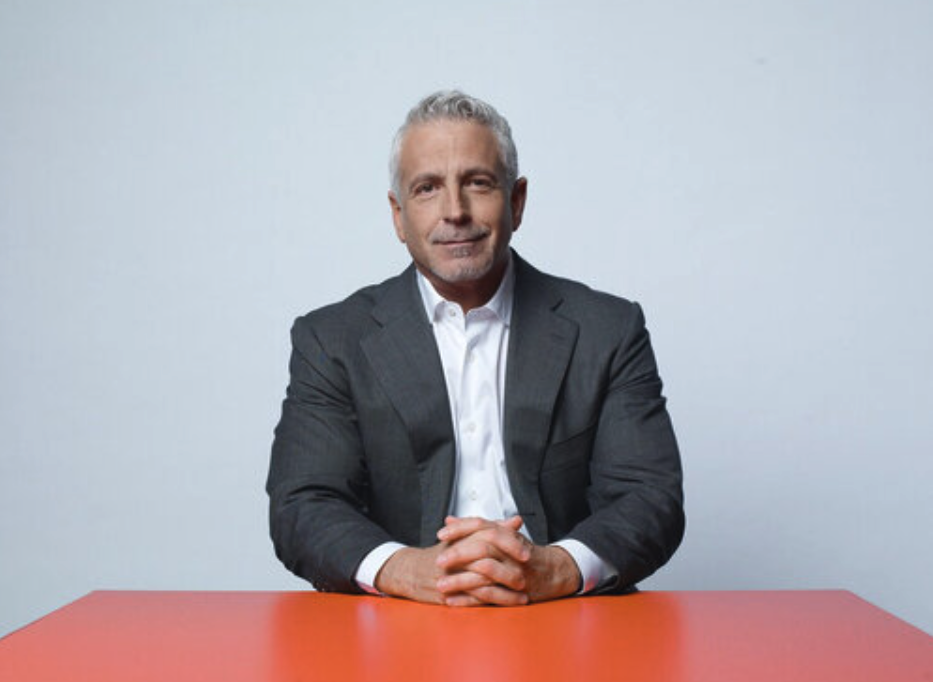
The new owner of Canoo is a professional manager named Tony Aquila, who is also an investor in Canoo, and helped Canoo successfully go public through SPAC at the end of last year.
In less than 4 years since its establishment, the founding core team of Canoo has scattered and the management has switched to the third generation, with a large number of technical experts and executives leaving.
In conclusion
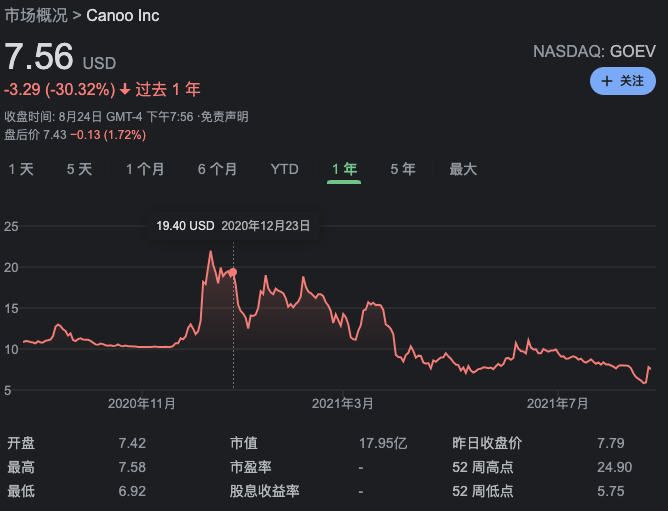
After going public via SPAC last year, Canoo underwent scrutiny by the Securities and Exchange Commission (SEC) in May this year. Currently, the stock price has dropped from about $19 at the initial offering to about $7.5 (as of 25th August), and dropped below $6 at its lowest point. The market has given feedback, but Canoo’s earliest investors have already cashed out during the public listing.

Initially, I browsed through Canoo’s meticulously crafted website with a new and exciting spirit. I saw various cute “pea” shaped models and imaginative usage scenarios, but obviously, the concept cars of traditional automakers and Chinese and American new forces are no worse than this.
Canoo wants to deceive me with these beautiful and unrealistic concepts, but fortunately, I, a clever ghost, have torn apart Canoo’s loopholes through careful and rigorous research.
Of course, there are variables. For example, Biden proposed a plan to vigorously develop the US electric vehicle industry, with the goal of increasing the proportion of electric vehicles in the total new vehicle sales in the US to 50% by 2030.
As early as the end of March, Biden announced a $174 billion plan to support the development of the electric vehicle industry. This includes $100 billion in consumer vehicle purchase incentives, $15 billion in charging station construction, $45 billion in electrification of school buses and public transit systems, and subsidies for the construction of new battery factories in the US and for transforming the closed automobile factories into electric vehicle complete vehicle and parts factories, which would receive $14 billion in subsidies.
For new US forces like Canoo, this is definitely a good thing, and they can survive by eating subsidies. Perhaps they can really go into mass production.
However, based on Canoo’s products, technology, and personnel, I made a simple and confident prediction that Canoo’s present and future days will be relatively difficult.
This article is a translation by ChatGPT of a Chinese report from 42HOW. If you have any questions about it, please email bd@42how.com.
